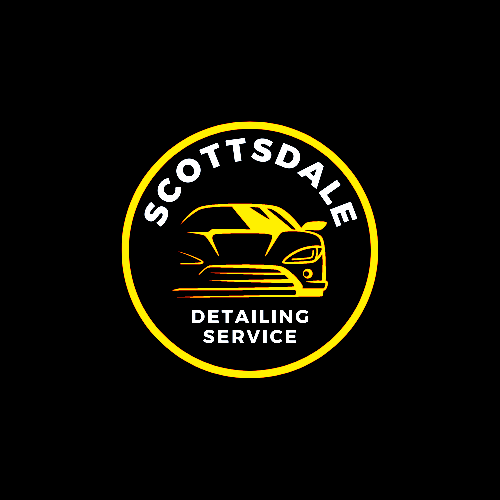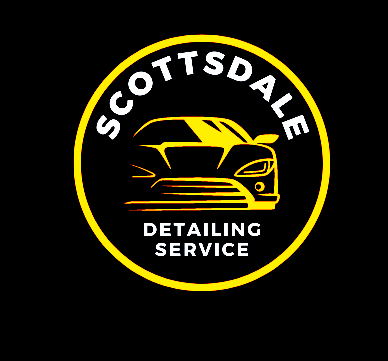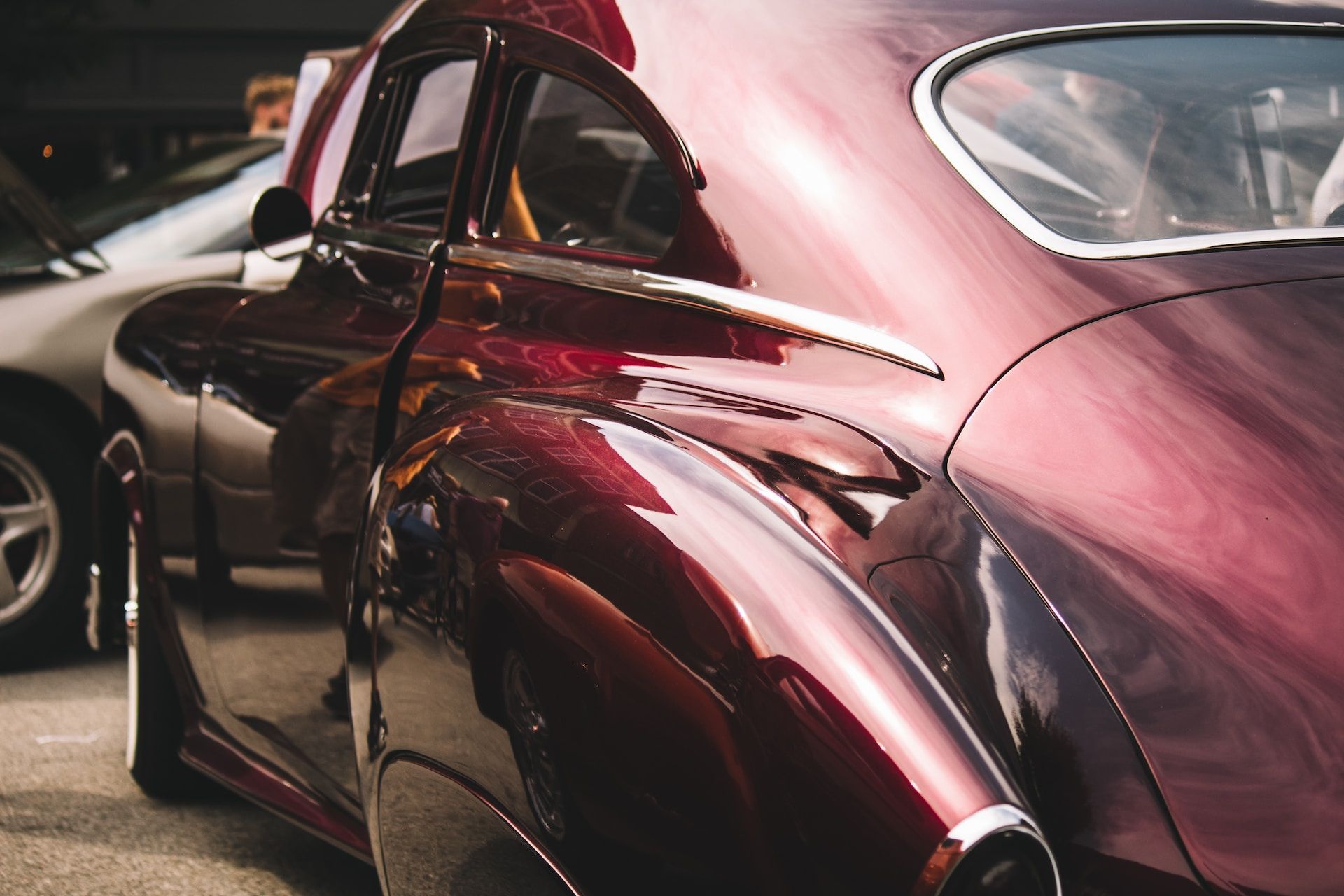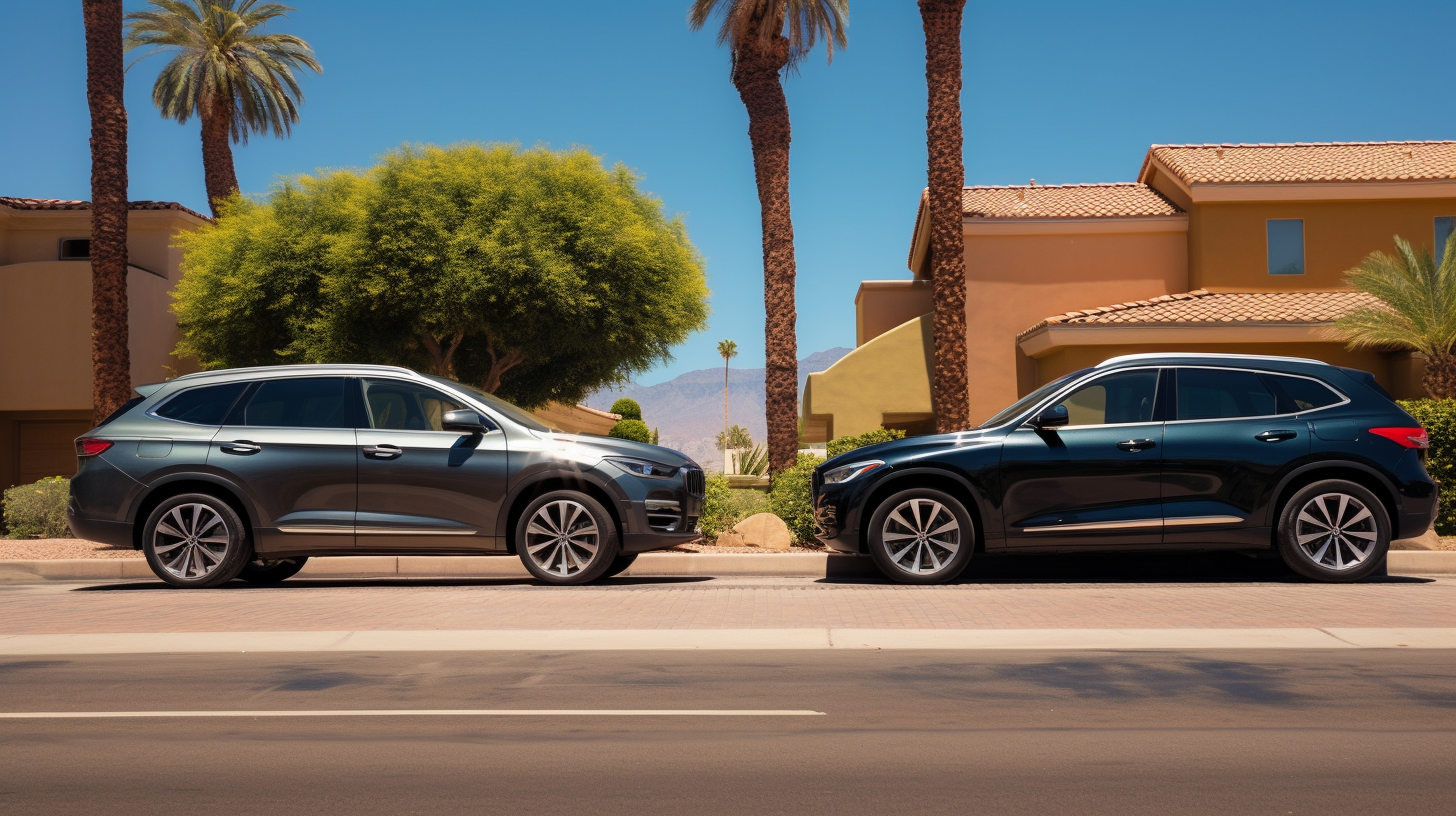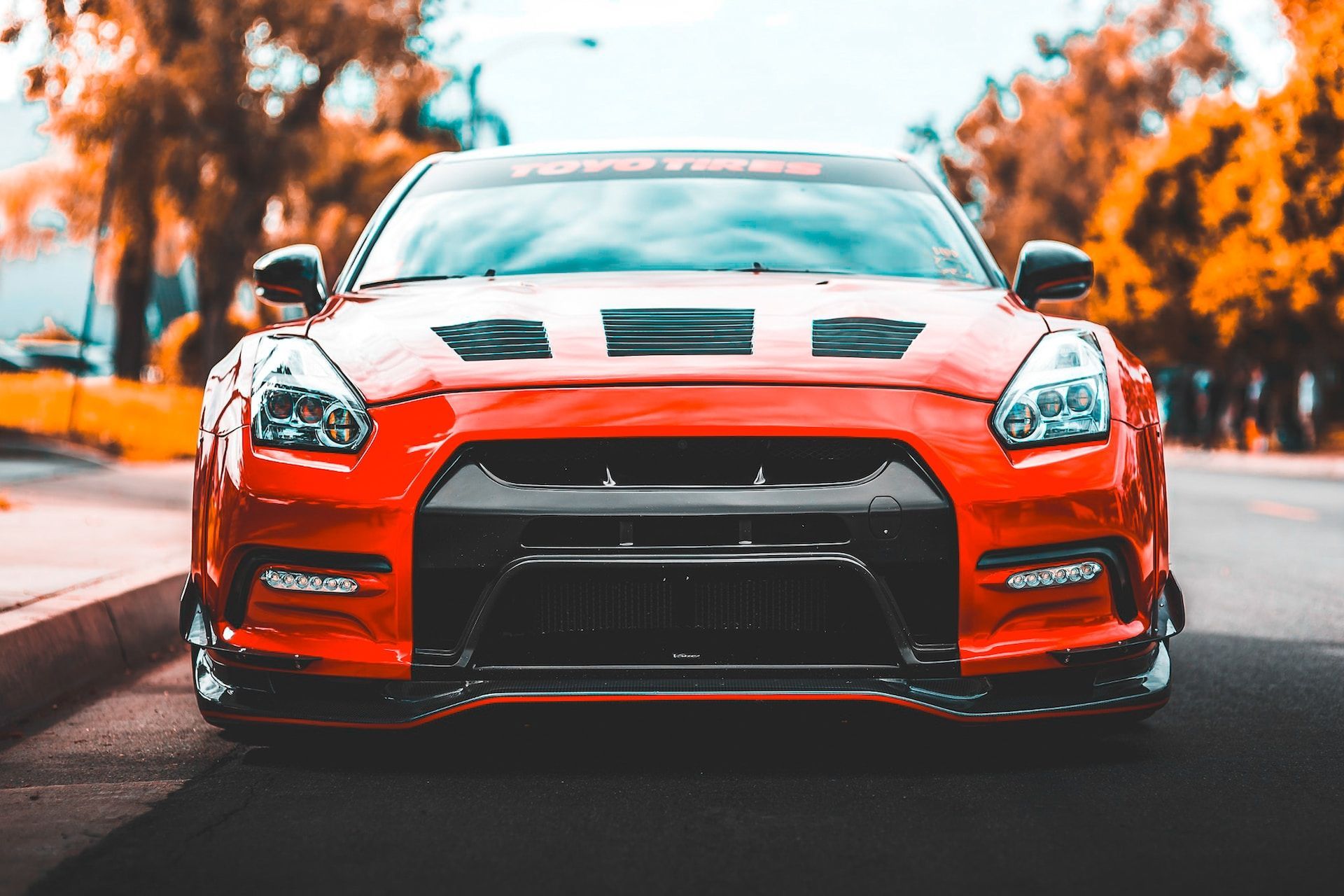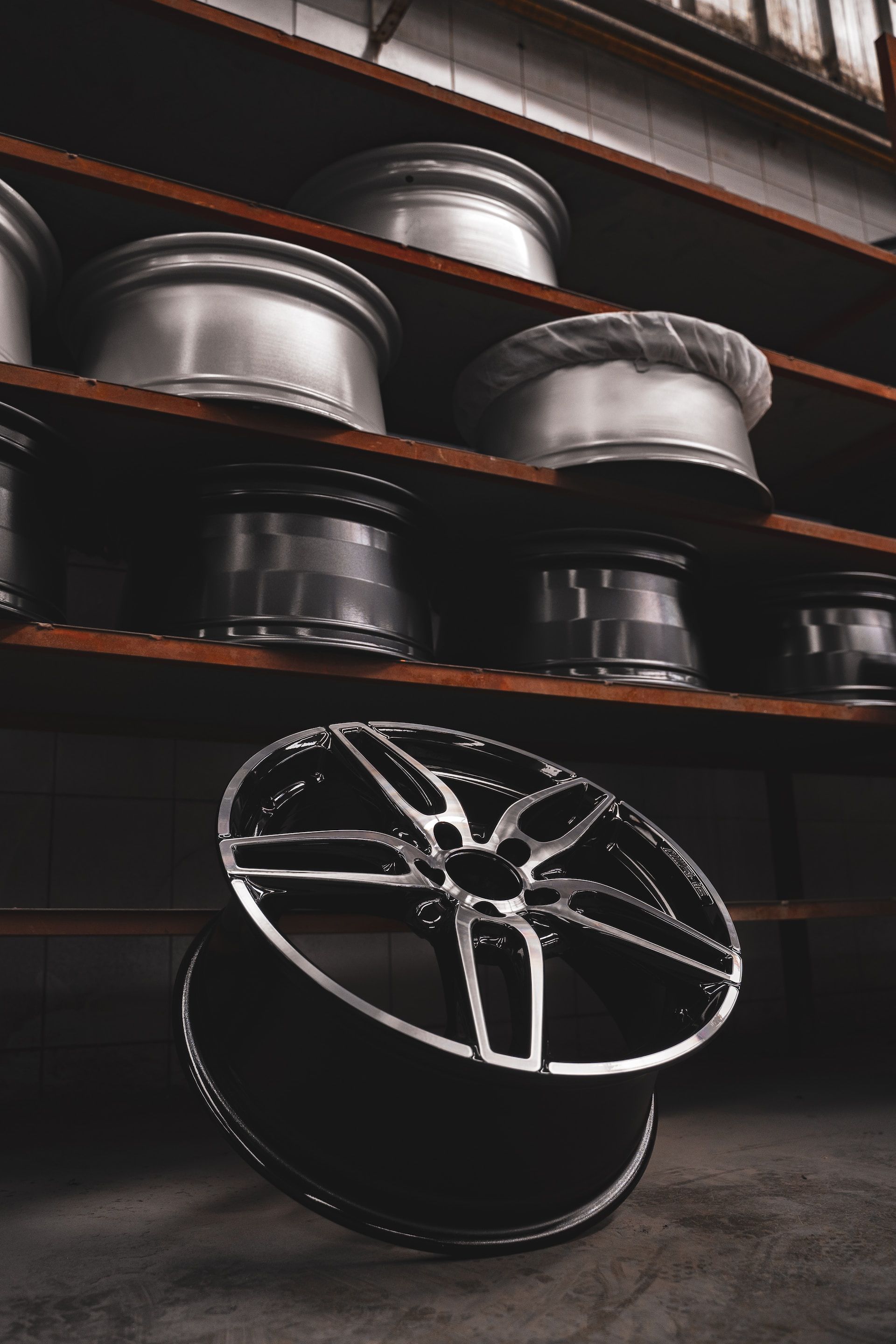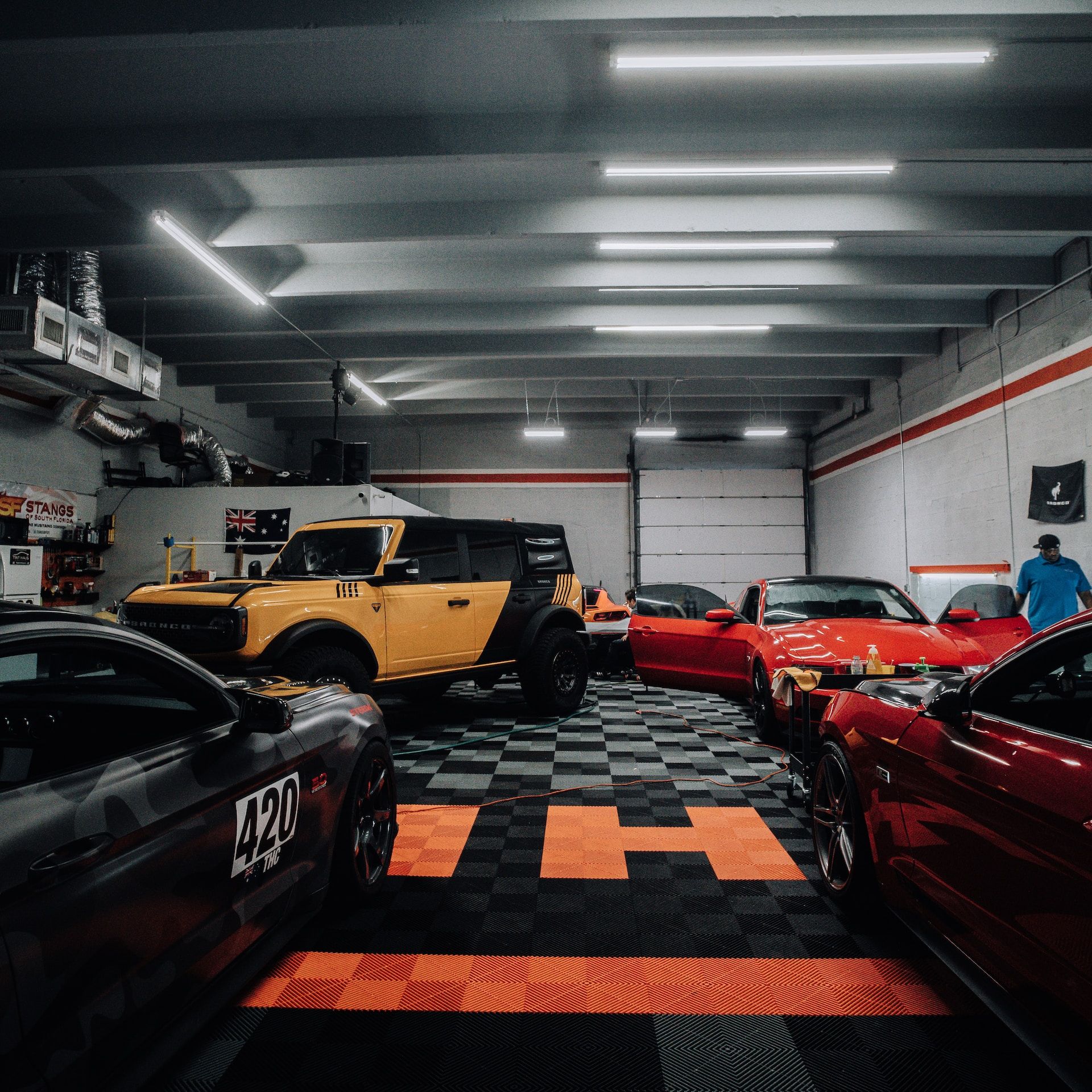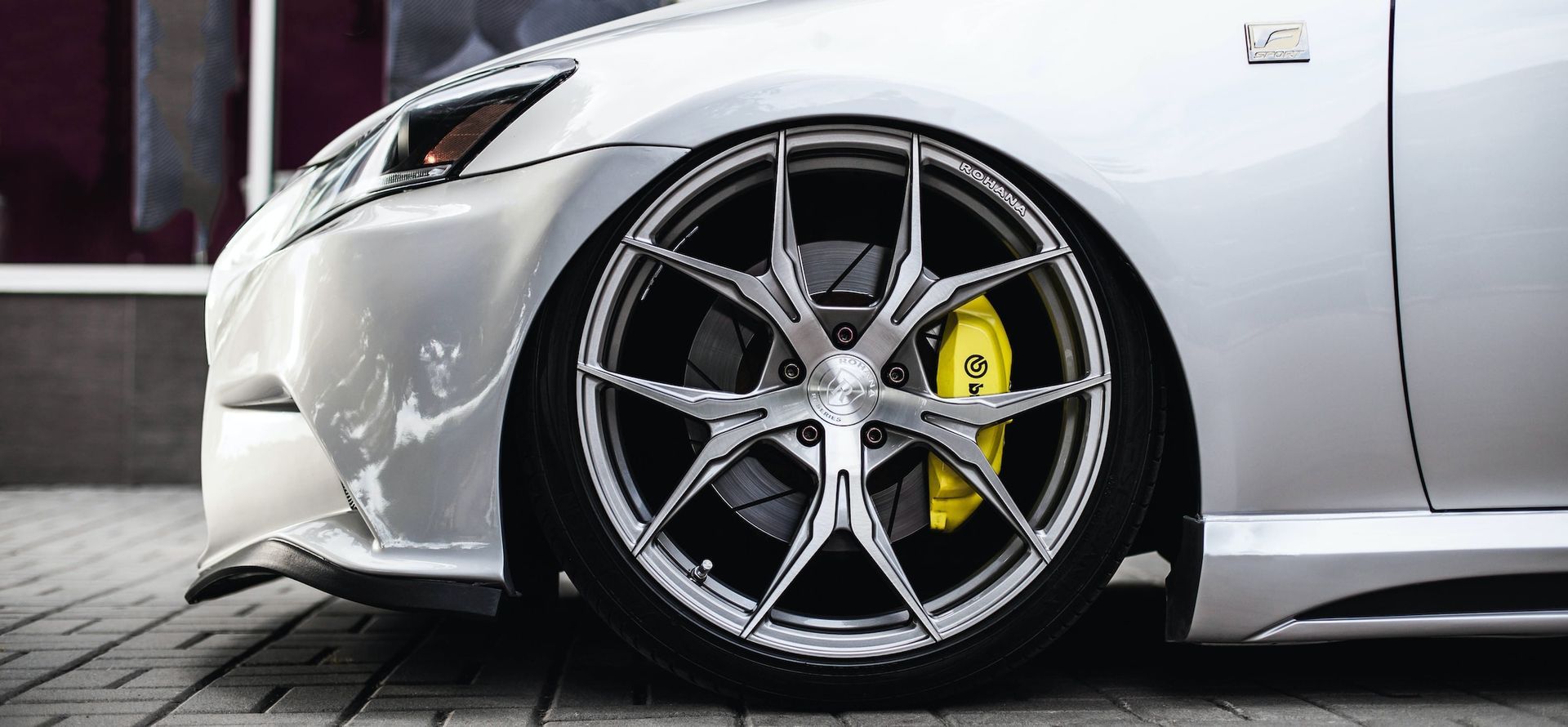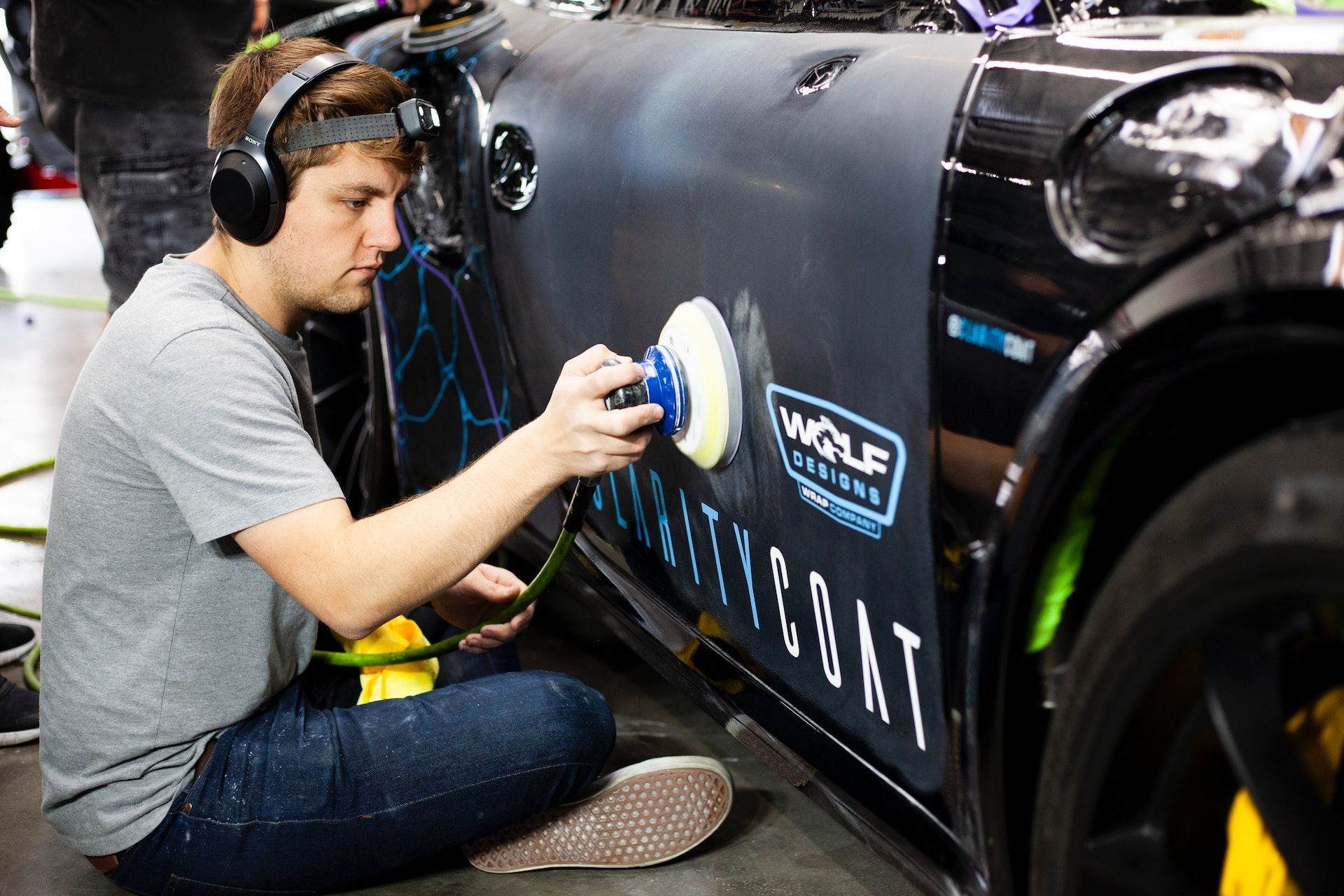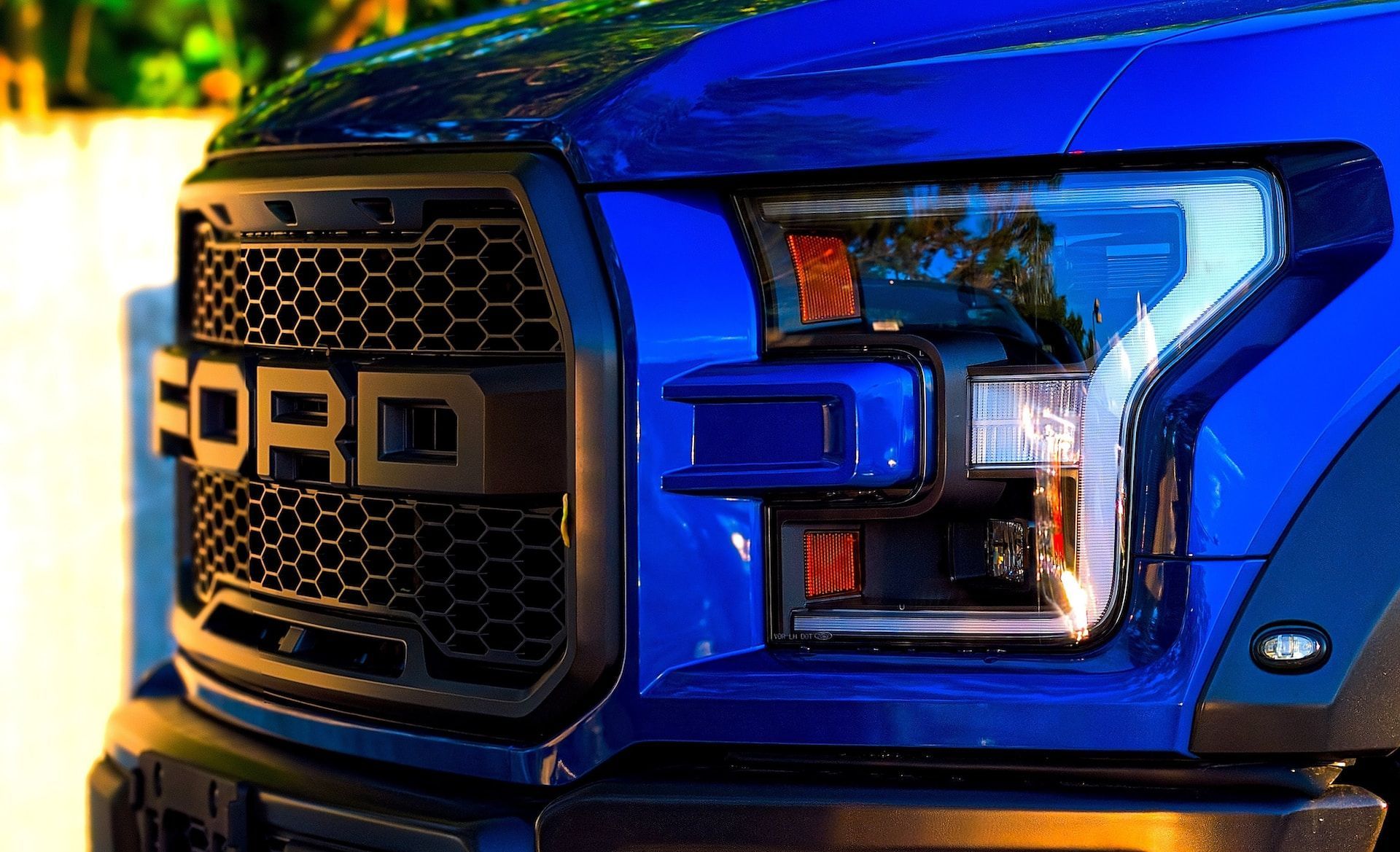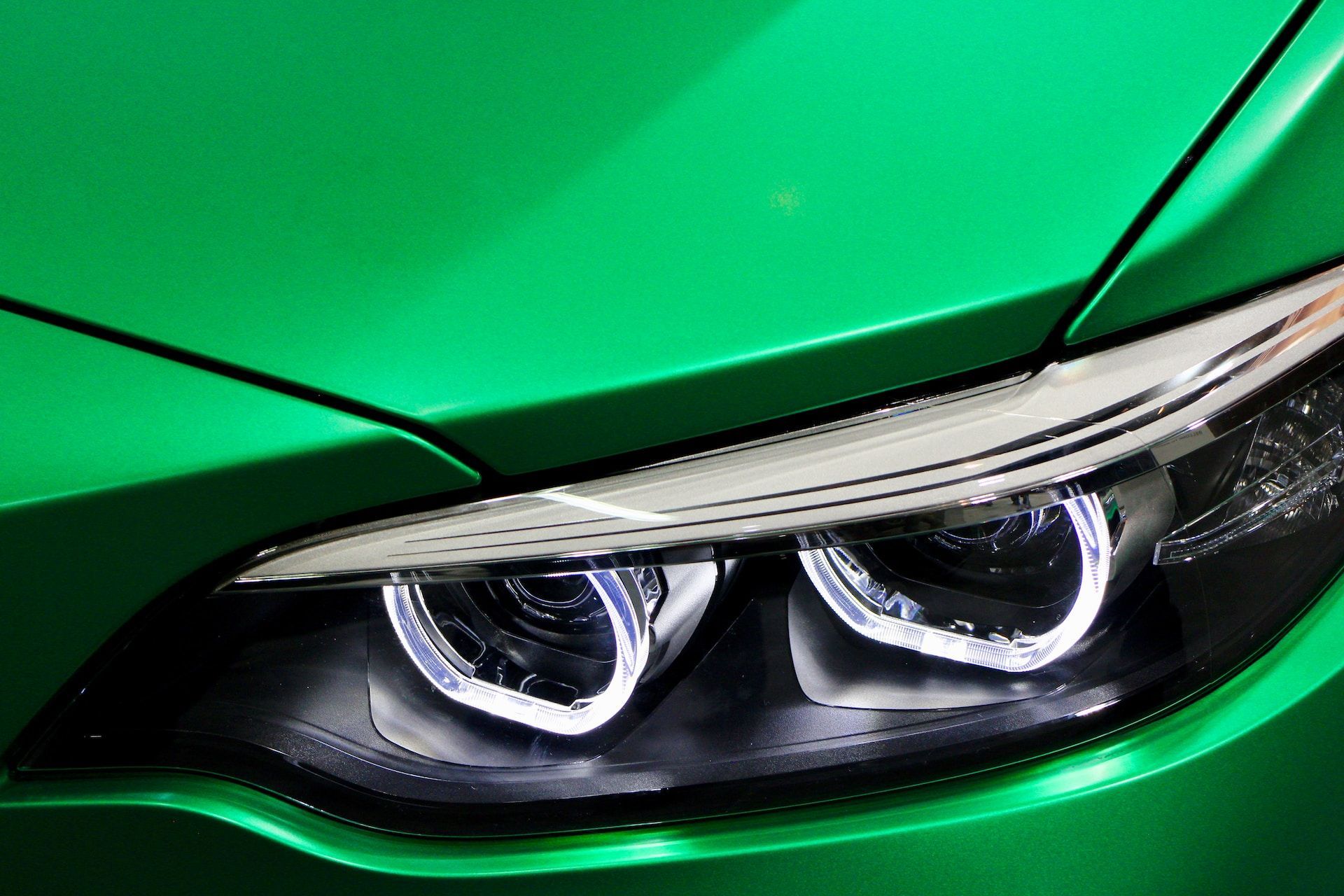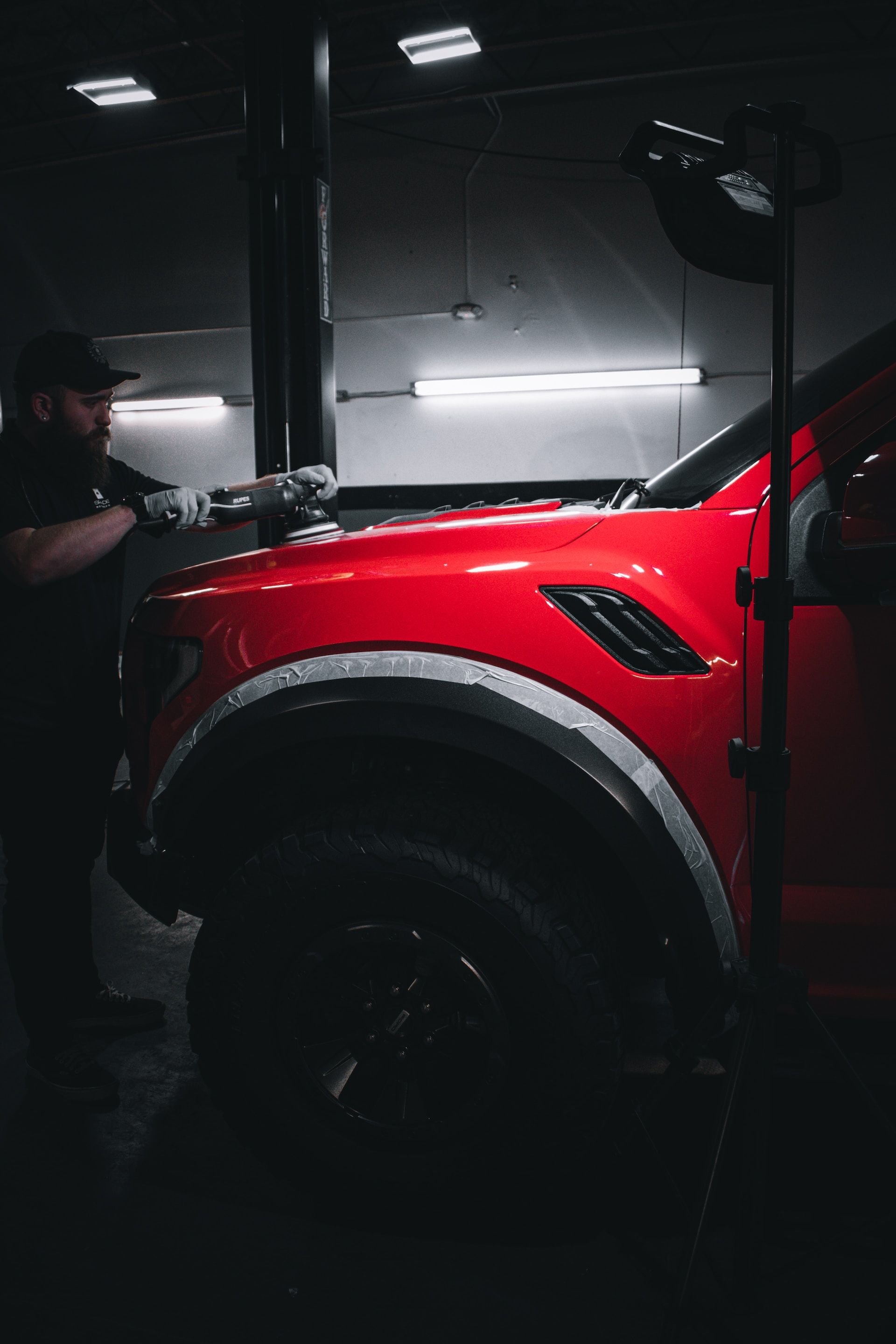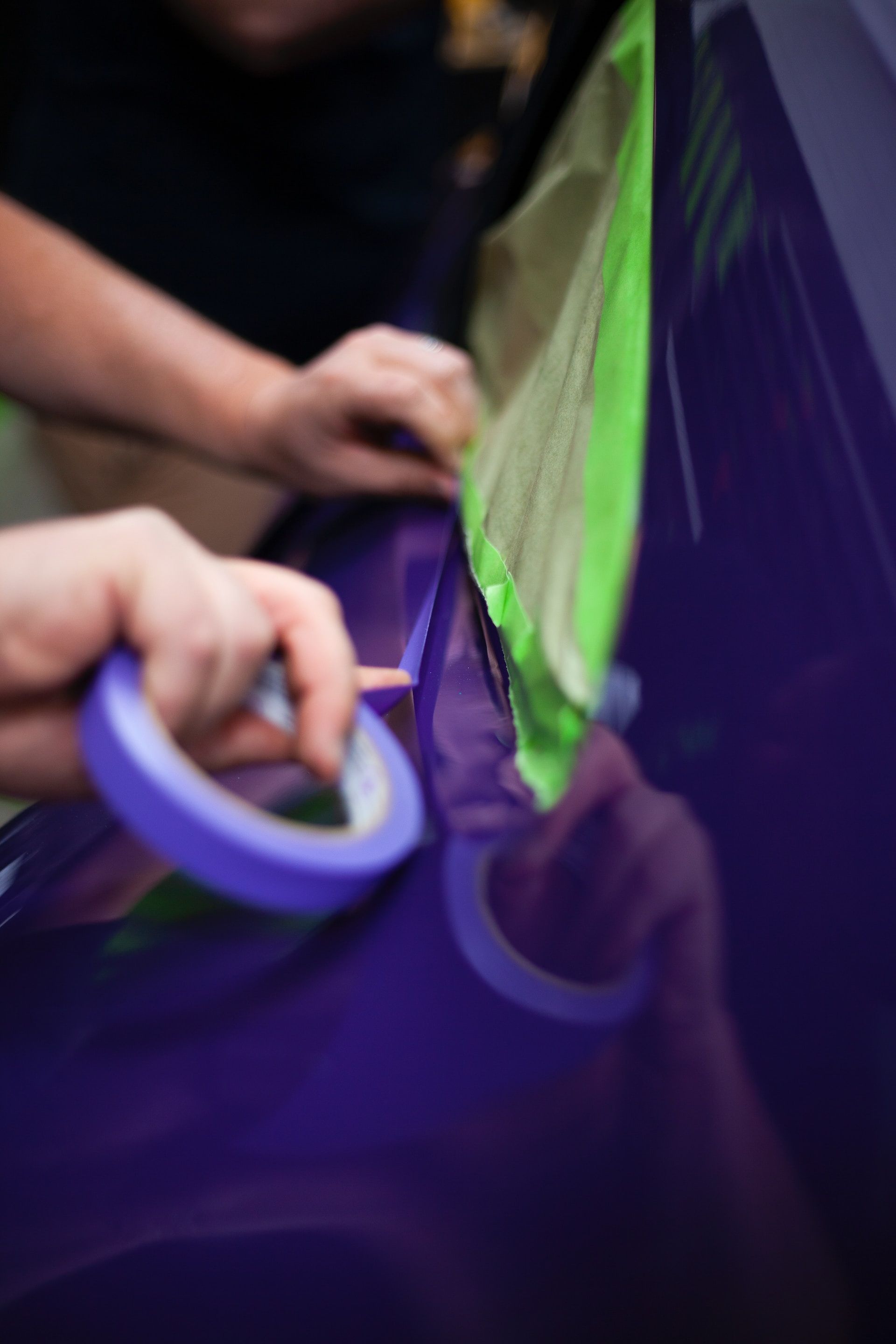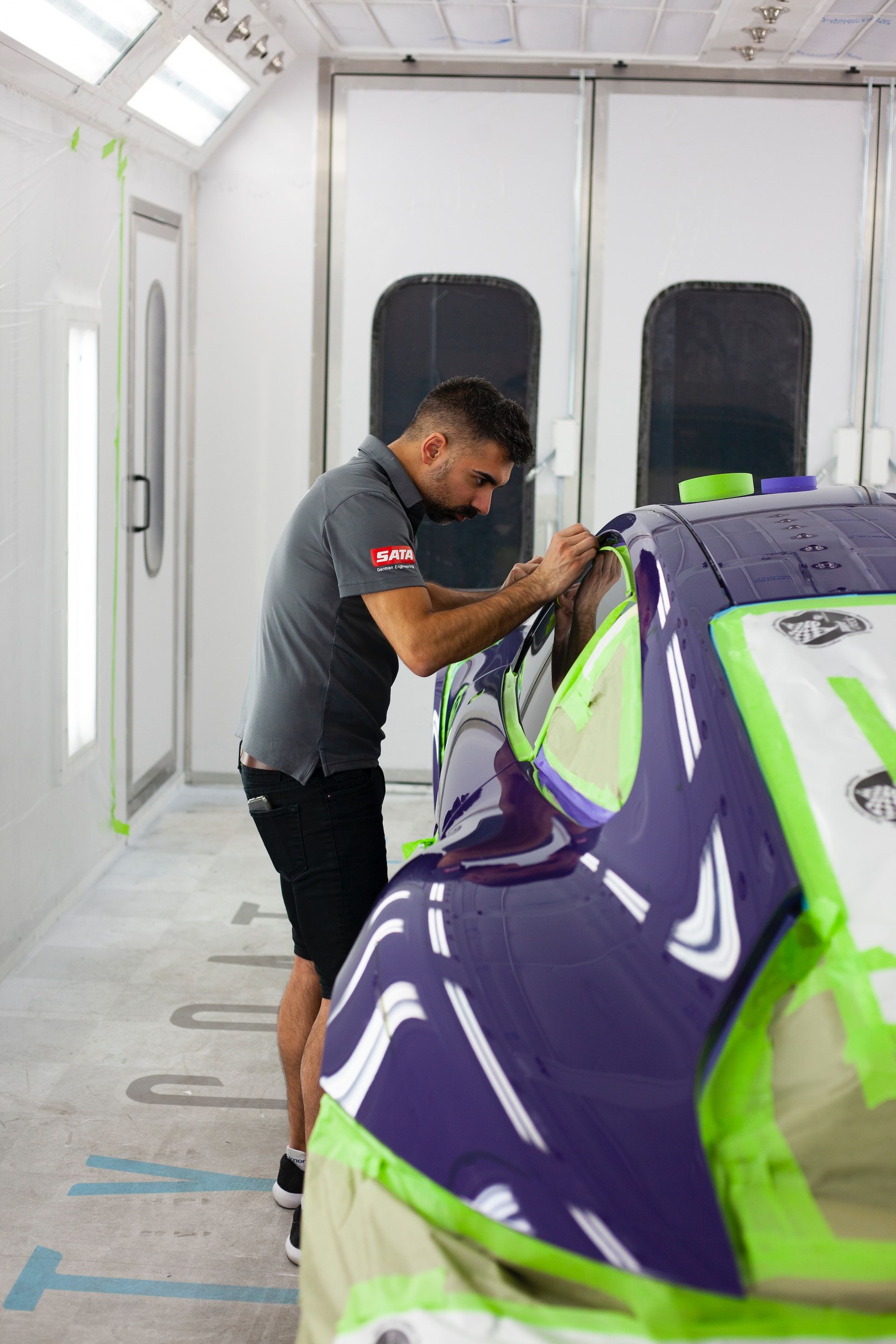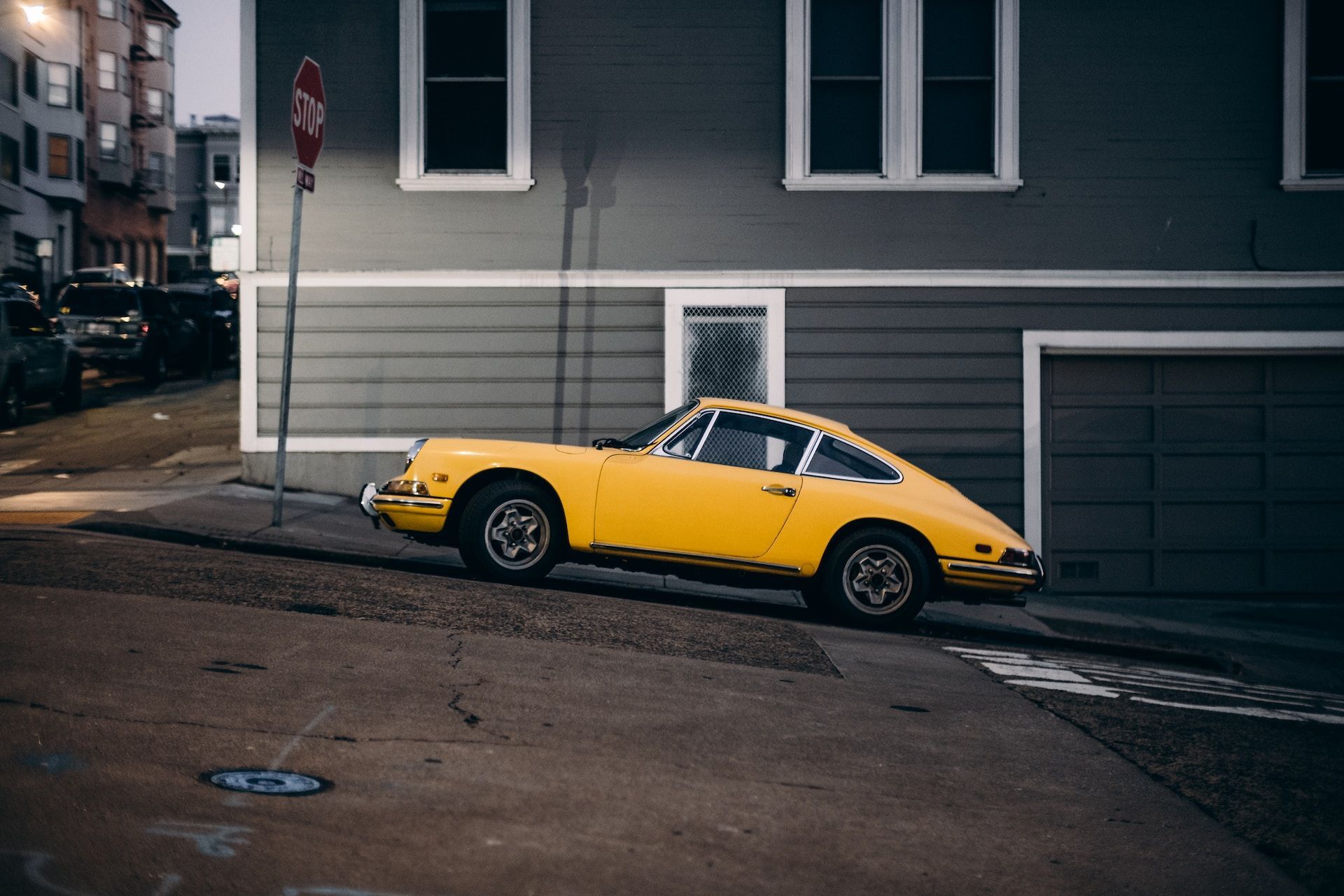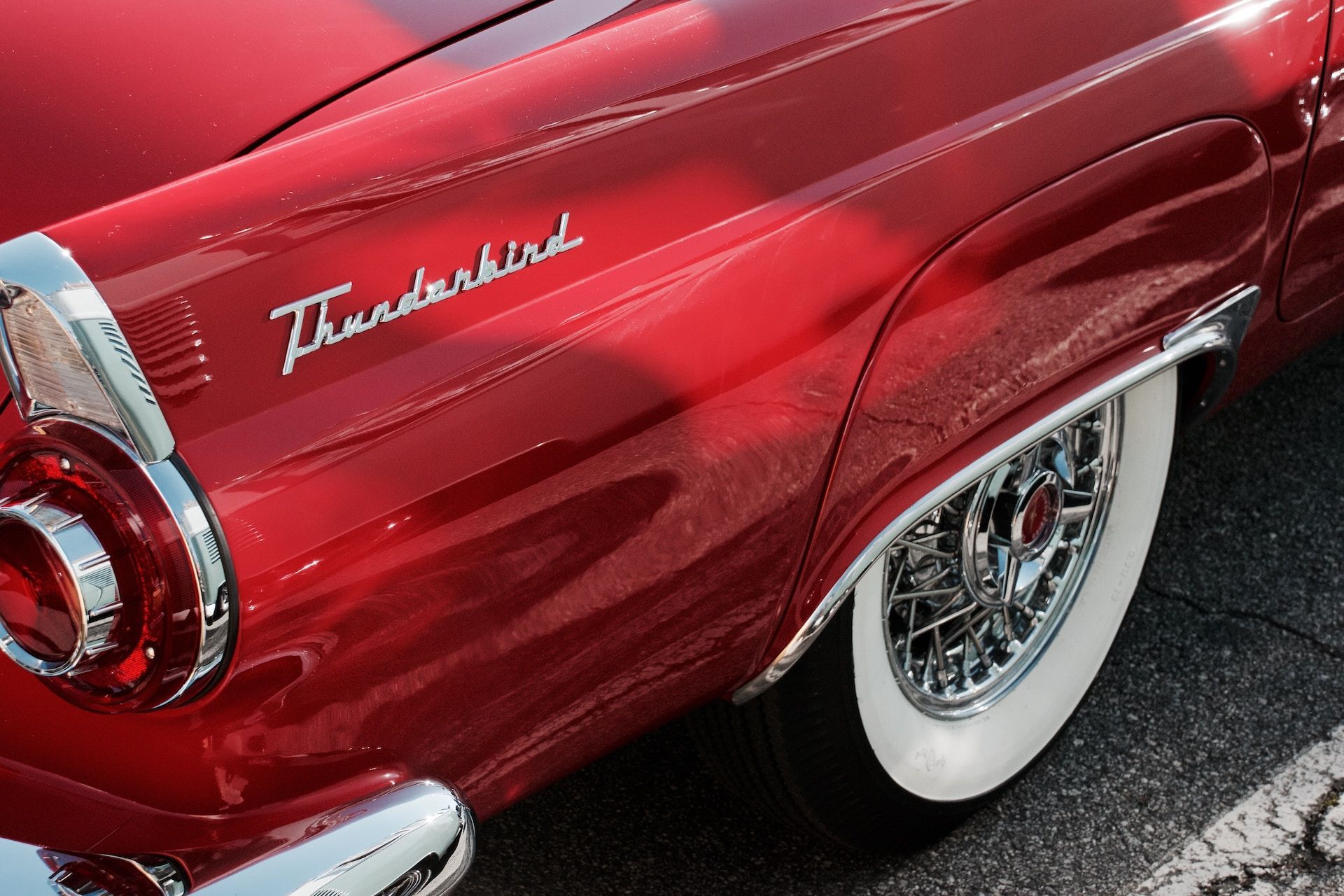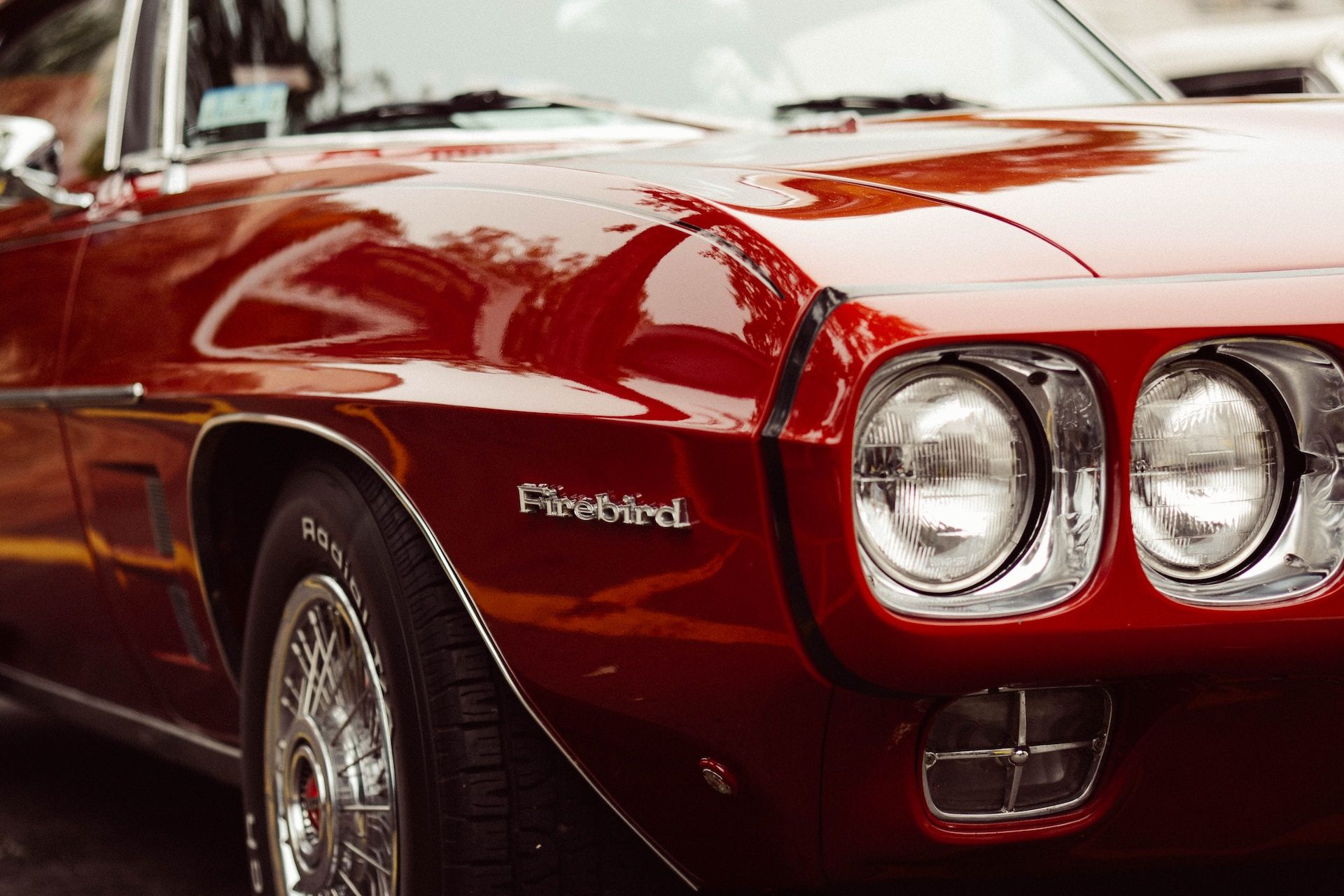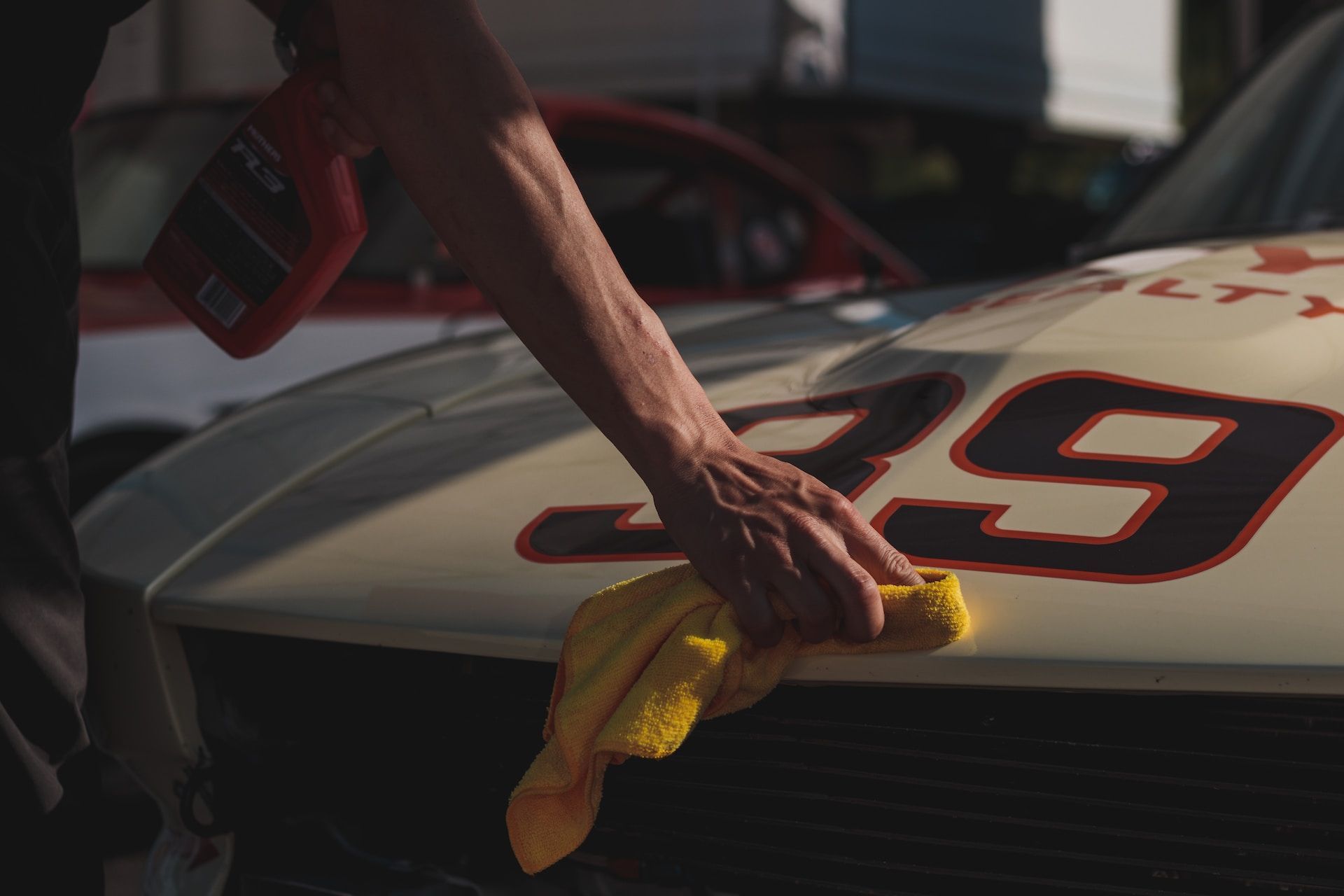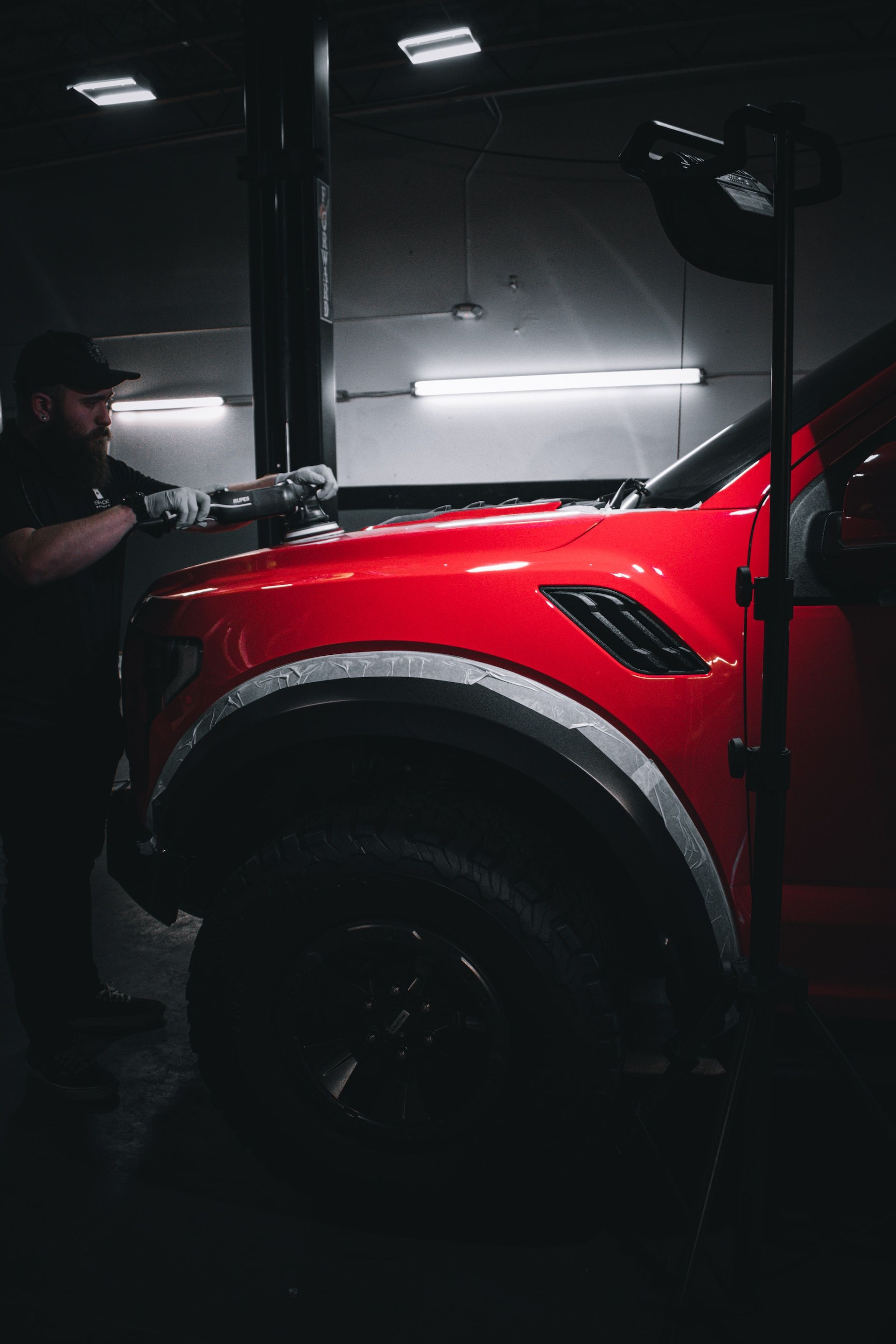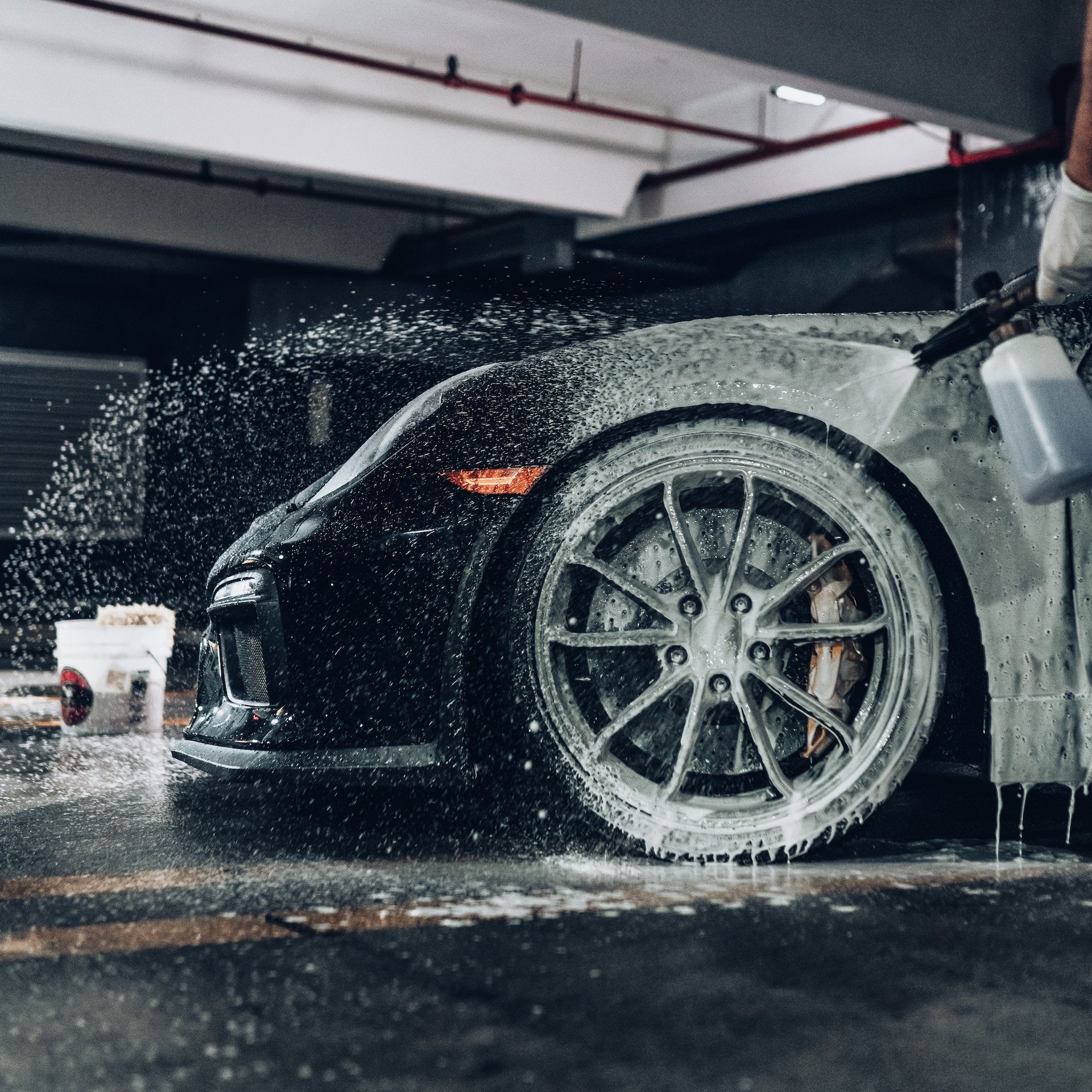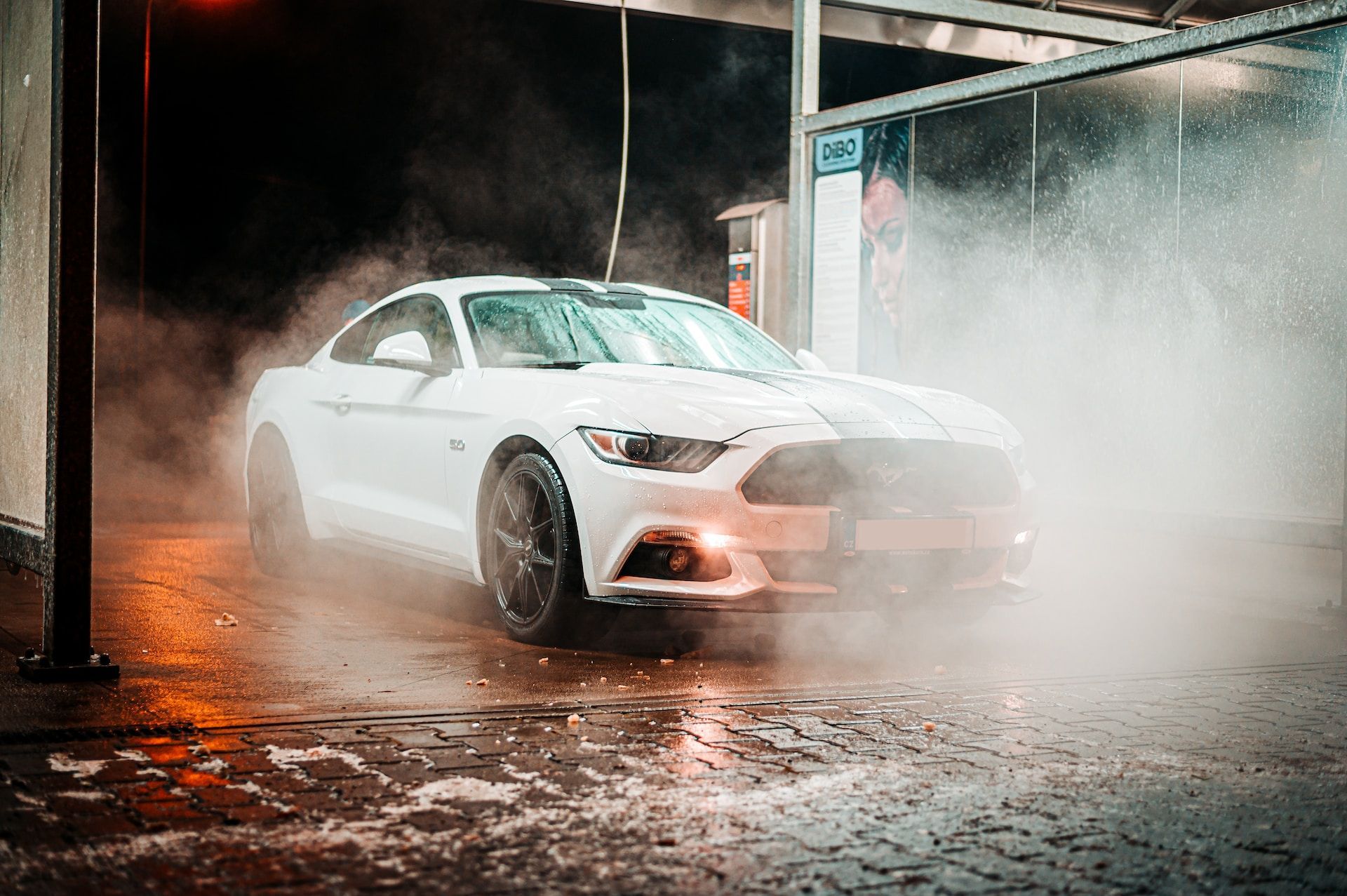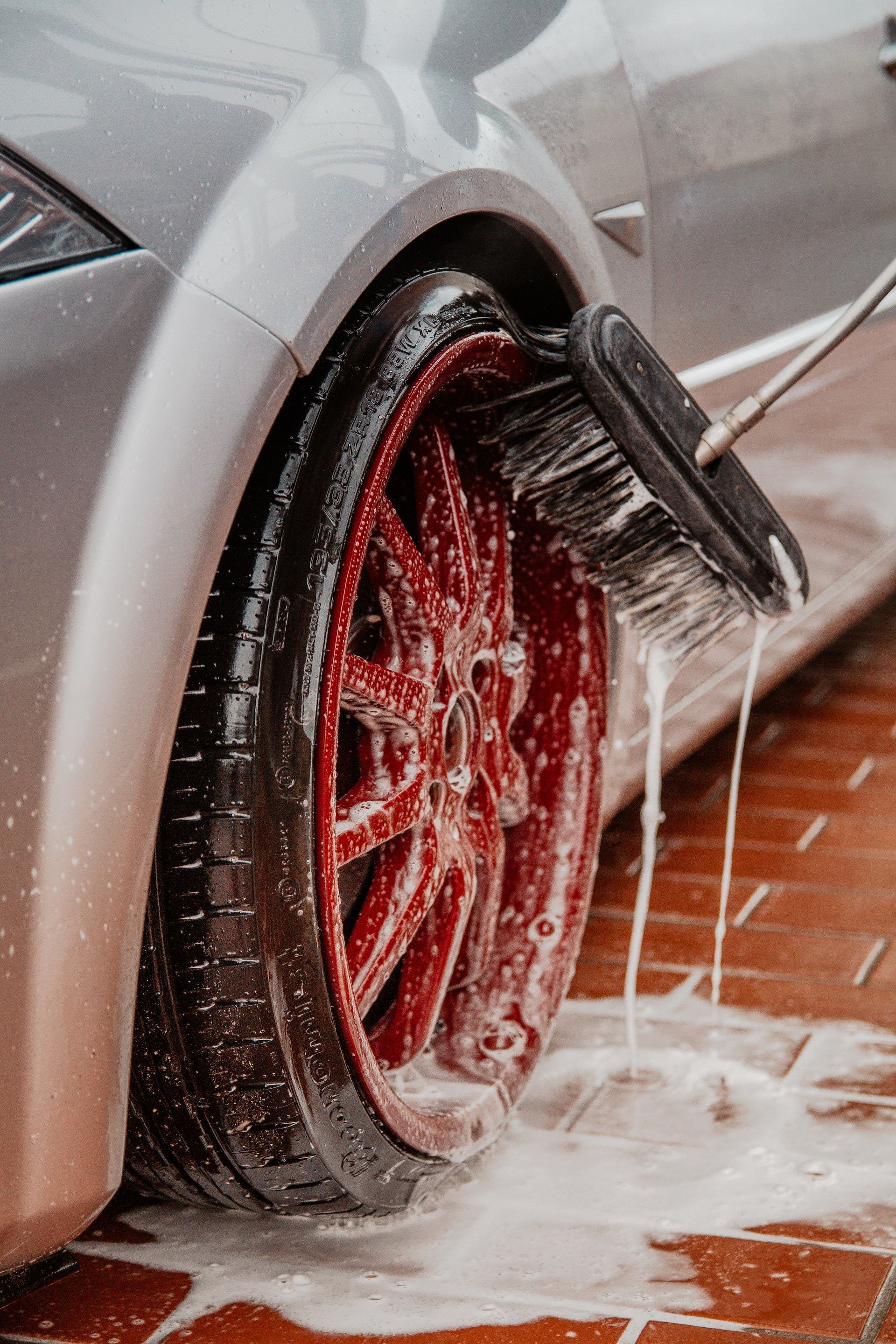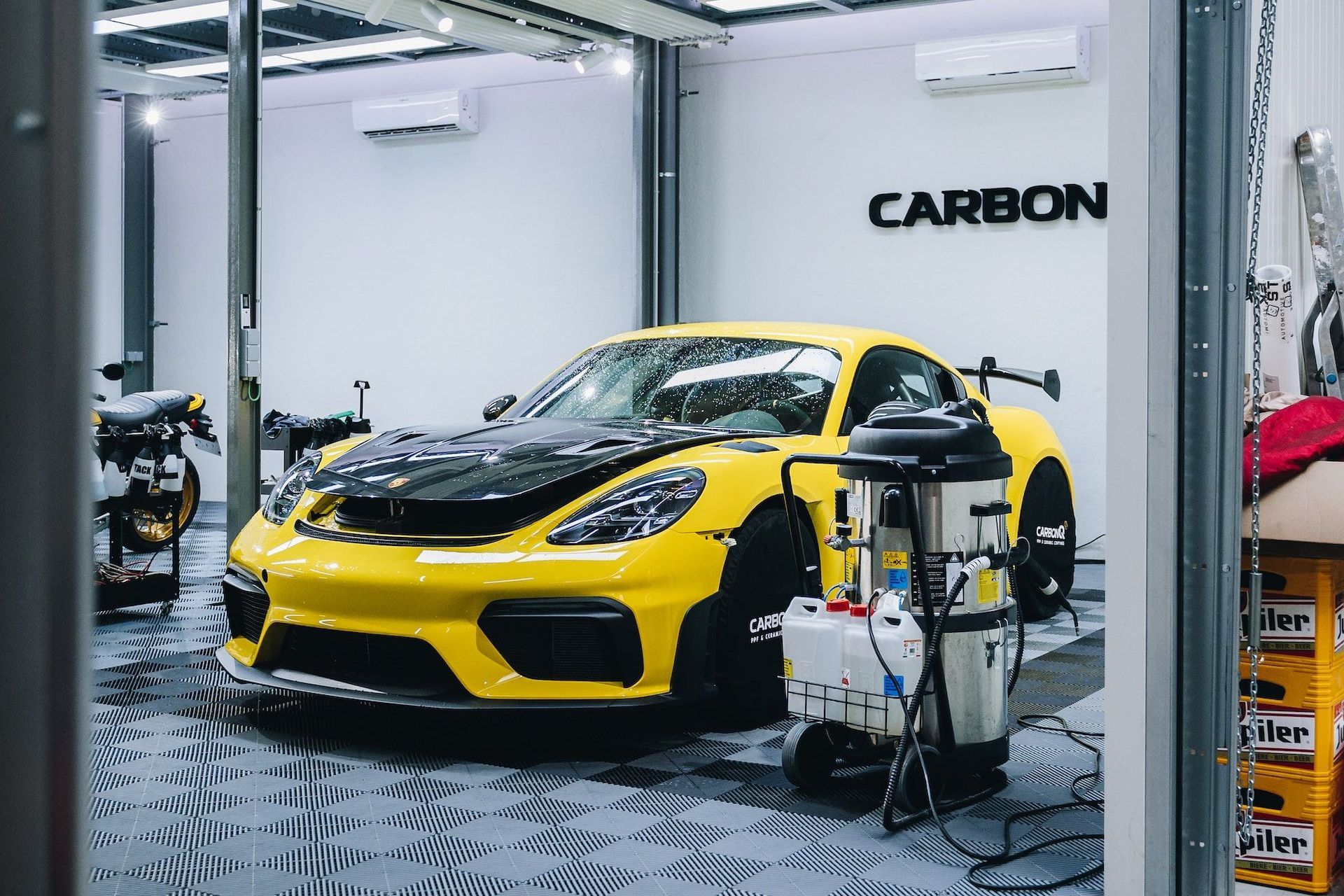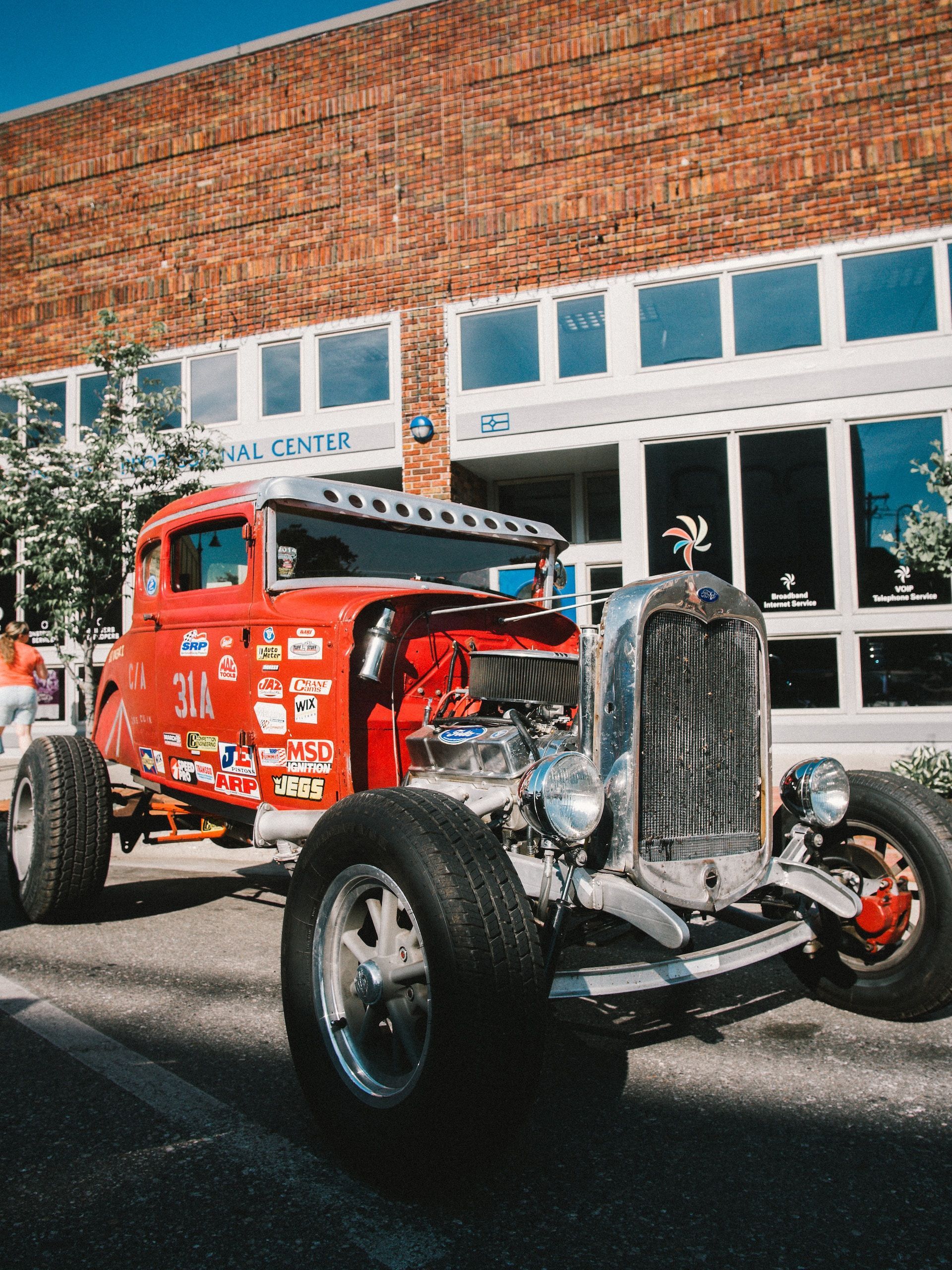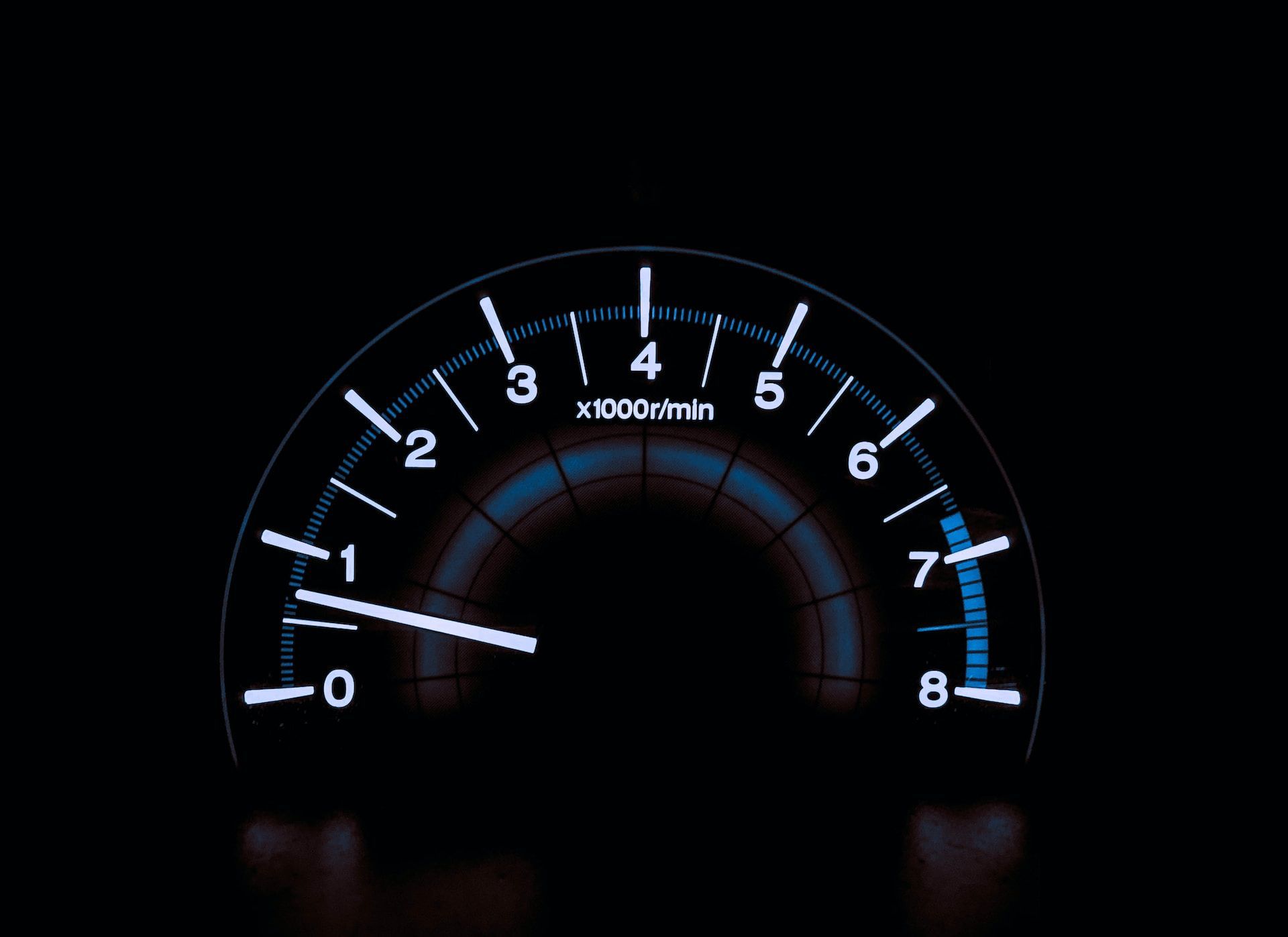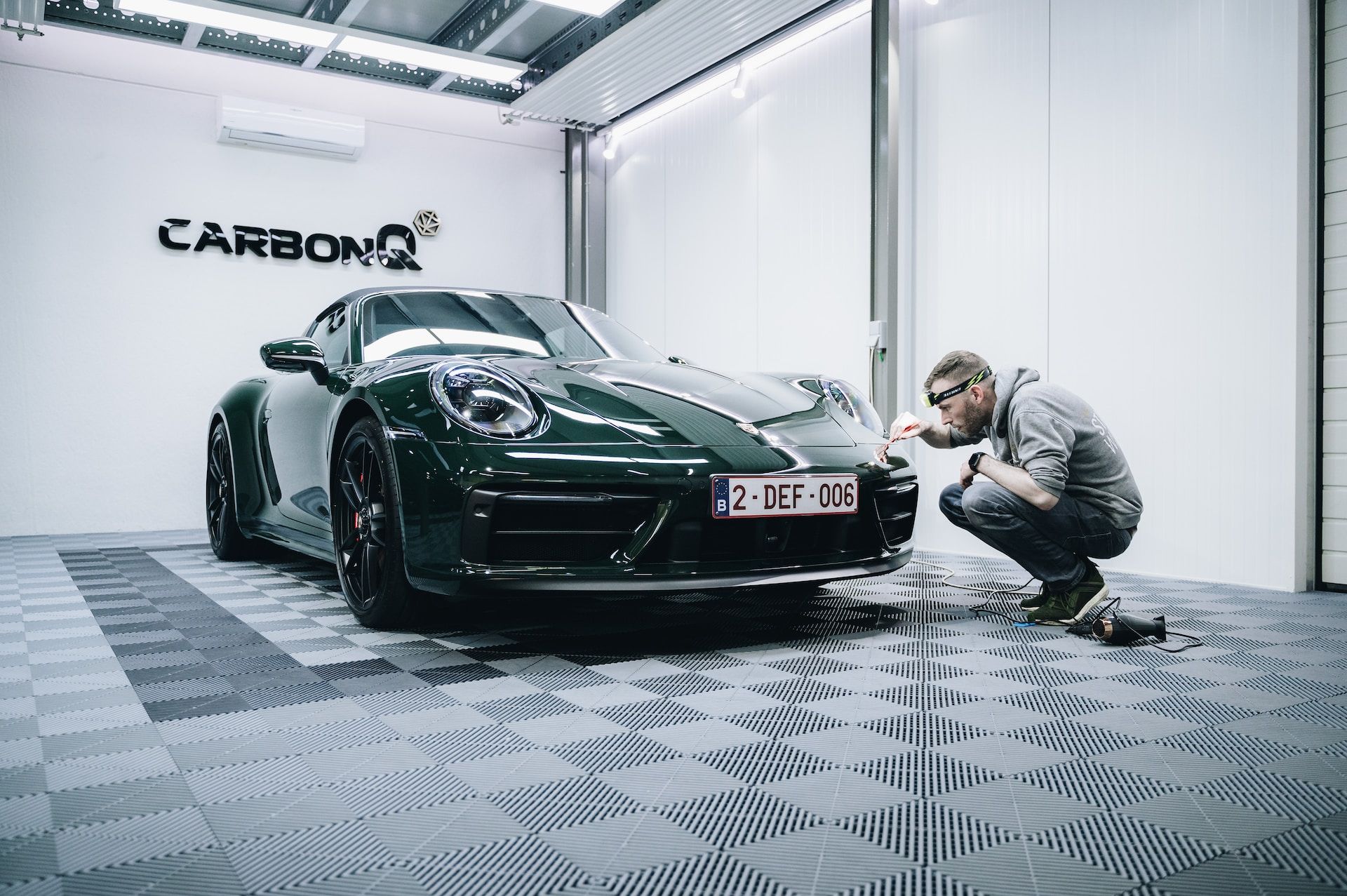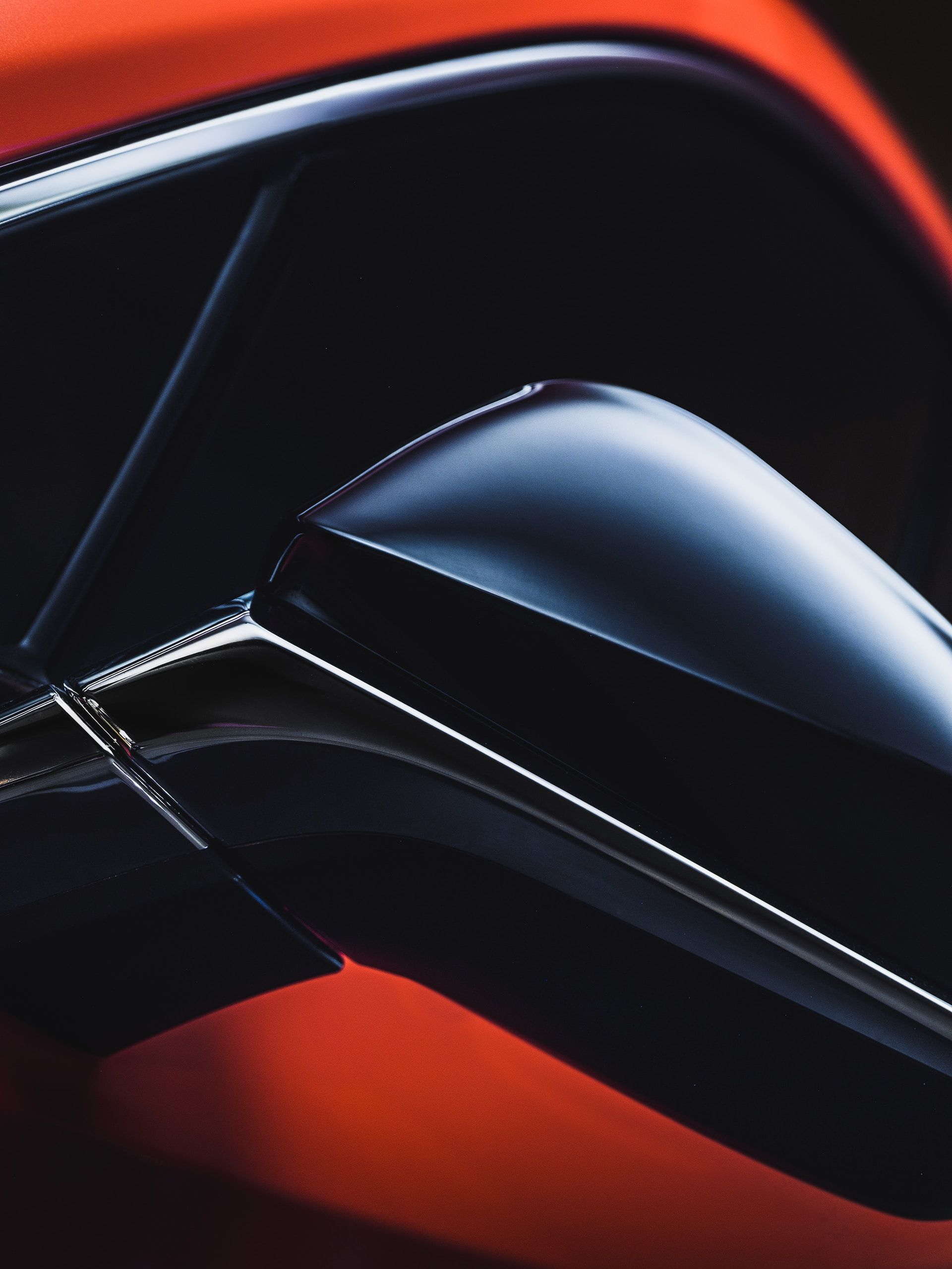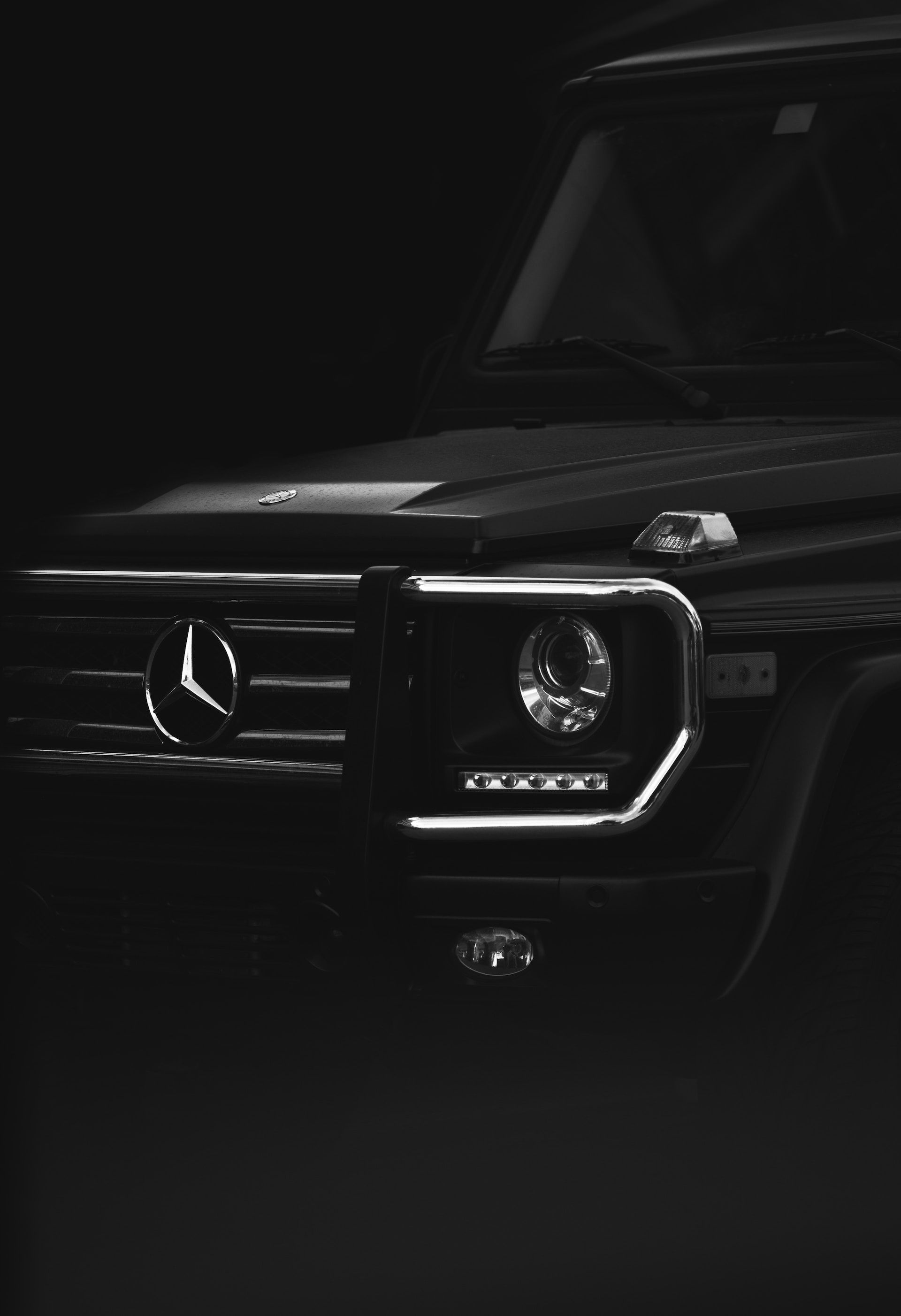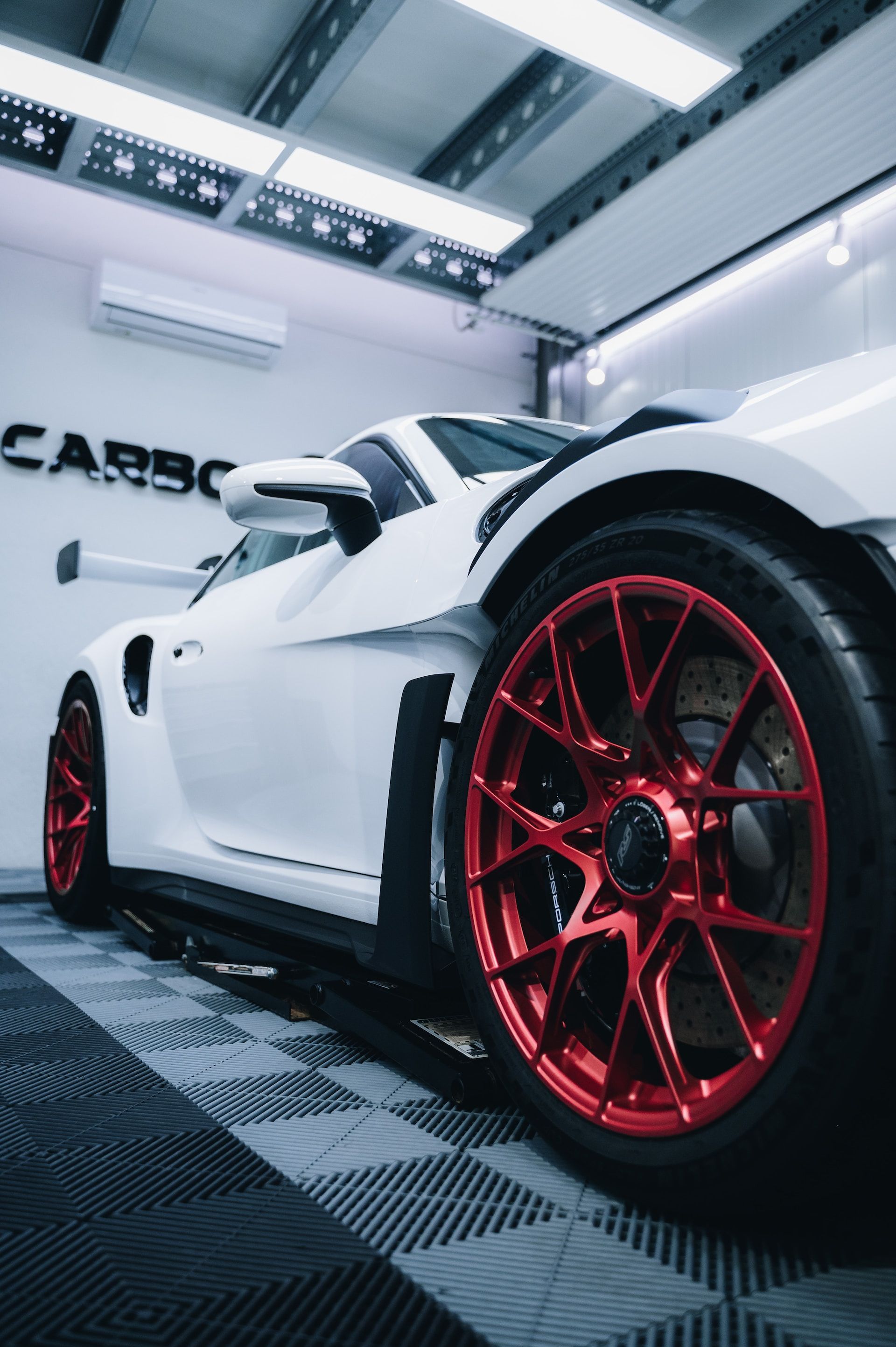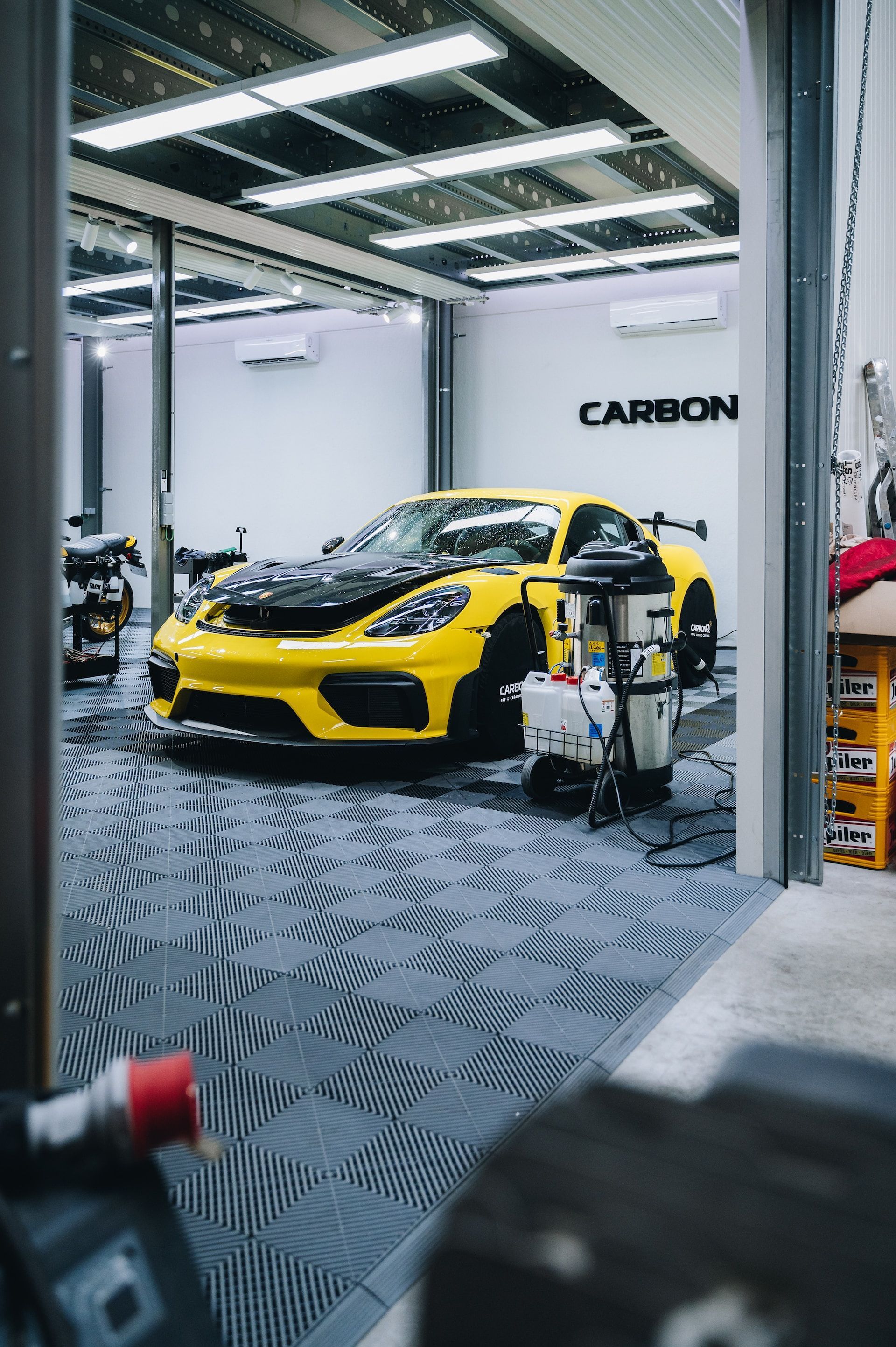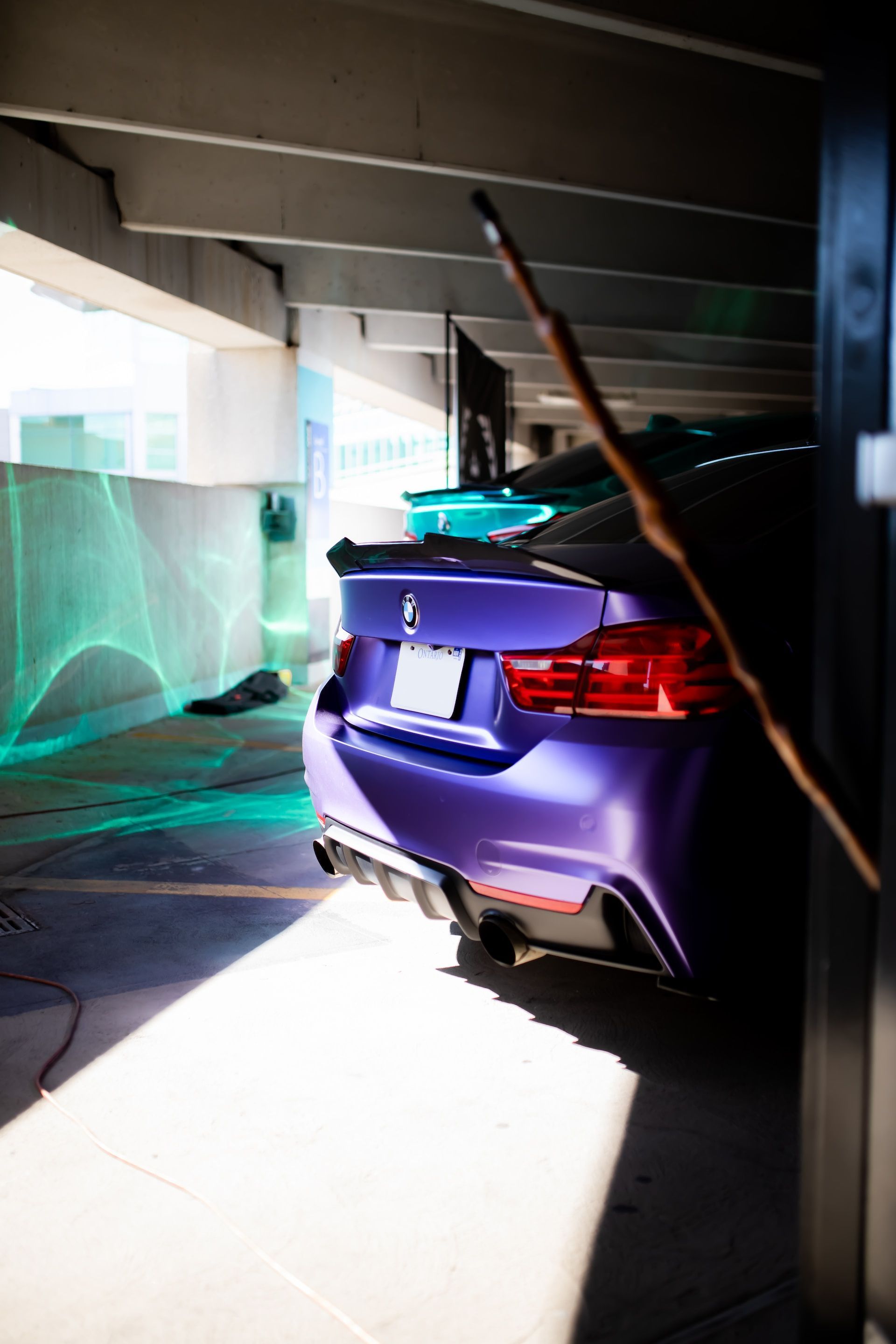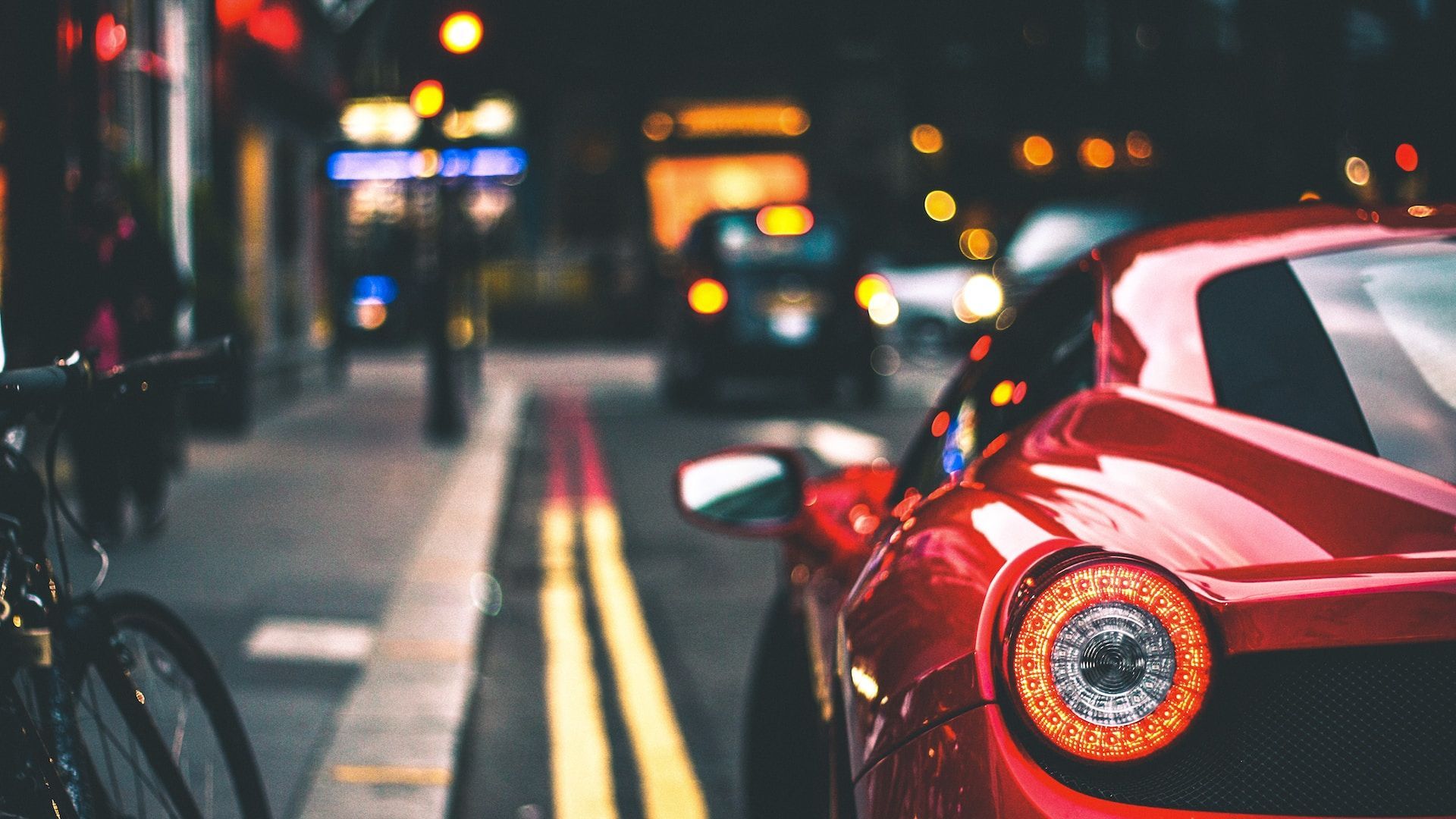3-Step Paint Correction: Revive Your Car's Appearance
An Explanation of Paint Correction
The exterior paint of a car is its first line of defense against the elements, and it's essential we maintain it correctly. Over time, paint can become damaged, faded, or scratched by environmental factors like UV rays, bird droppings, tree sap and more.
This damage not only looks unsightly but also leaves the underlying metal unprotected from corrosion and rust. That’s where paint correction comes in.
Paint correction is a process that involves removing imperfections from a car’s paint job to restore its original shine and finish. This process typically involves using specific tools and products to polish out scratches, swirls, and other defects in the paint until it looks as good as new.
Learn more about: How to paint correction guide...
The Importance of Maintaining Your Car's Paint Job
Apart from just looking great on the road, maintaining your car's exterior has several advantages. First off, a well-maintained car maintains its resale value better than one with scratches and dents all over the bodywork.
When it comes time to sell or trade-in your vehicle for a new one having a pristine exterior will help you get top dollar. In addition to that maintenance contributes to preserving your vehicle’s integrity over the years.
It prevents rust caused by water trapped beneath chipped or scratched paint which can eat away at metal components causing structural issues with your vehicle leaving you stranded on the side of the road waiting for assistance. maintaining your cars' appearance gives you pride in ownership- like any other valuable asset such as a house or jewelry- keeping up appearances matters!
Learn more about: Mastering multi stage paint correction...
The Benefits of Proper Paint Correction Techniques
While some might argue that perfection is impossible when restoring an aged paint job I beg to differ! Properly executed 3 step corrections done with care by skilled professionals will leave your car's paint looking flawless. The benefits of this are numerous.
When the paint is smooth and shiny, you'll notice that it picks up less dirt and debris, making washing the car easier and less frequent. Additionally, a corrected paint job makes any subsequent ceramic coatings or wax applications last longer since they adhere to a perfectly prepped surface.
Having a car that looks its best on the road feels great! You'll be turning heads everywhere you go with your ride standing out from inferior vehicles on the road while providing an added layer of protection to your vehicle from environmental factors.
Maintaining proper care of your cars' exterior is essential for both appearance and longevity over time. Properly executed paint correction takes some effort but pays off in spades with long term benefits including resale value retention, damage prevention, ease of maintenance, and pride in ownership.
Learn more about: Best paint protection products...
Step 1: Inspection and Preparation
The Importance of a Thorough Inspection
Inspecting the car's paint job is crucial before starting any paint correction process. It's important to identify the extent of damage or imperfections, which can vary from simple scratches to deep swirl marks, oxidation, or even peeling paint.
A thorough inspection will help in determining which tools and products should be used for correcting the paint job. Skipping this step can lead to disastrous results that end up costing more money in repairs.
Learn more about: Paint correction and scratches...
The Vital Role of Washing and Decontaminating
Before diving into paint correction, you need to wash and decontaminate the car's surface thoroughly. Dirt, grime, and other contaminants can get trapped in the car's clear coat, making it harder to correct any imperfections later on.
Decontamination is necessary because industrial fallout, tar spots, and even bird droppings contain chemicals that can etch into the clear coat if left untreated for long periods of time. Using a high-quality car shampoo will remove most dirt deposits from your vehicle without leaving residue.
Learn more about: Paint correction and rock chips...
The Need for Masking Off Areas That Won't Be Corrected
Masking off areas such as emblems or badges that are not going to be corrected is vital because it prevents any harm caused by polishing agents or abrasive tools aimed at specific areas with limited access such as around door handles or window seals. Masking tape also protects plastic trims from getting scratched during the polishing process when using power tools like rotary/polisher machines. Inspecting the car's paint job thoroughly before starting anything will help identify damages or imperfections accurately while washing and decontaminating ensure no other contamination remains on your vehicle's surface that might cause further damage during correction processes.
Additionally masking off unwanted surfaces is vital since it prevents damaging delicate parts in the car like plastic trims or emblems. Skipping these steps might make the correction process disastrous, leading to further expenses to fix mistakes that could be avoided by proper preparation.
Learn more about: paint correction and how long it takes...
Step 2: Paint Correction Process
Choosing the Right Tools and Products for the Job
When it comes to paint correction, using the right tools and products is crucial. Without them, you may actually end up causing more damage to your car's paint job than you fix. So what should you be looking for?
For starters, make sure that you're using a high-quality dual-action polisher. Many DIY detailers make the mistake of trying to correct their car's paint using just a random orbital polisher.
While this type of tool is great for removing light surface scratches and swirls, it simply doesn't have enough power or torque to tackle deeper blemishes. Next, consider what type of abrasive pads and compounds you'll need to get the job done right.
Abrasive pads come in different levels of aggressiveness (typically measured in grit), so be sure to choose one that's appropriate for your specific situation. In addition, be sure that you're pairing your pads with a compatible polishing compound.
Learn more about: If paint correction is worth it...
Removing Scratches, Swirls, and Other Imperfections
Once you've got your tools and products selected, it's time to start tackling those unsightly scratches and swirls on your car's exterior. The key here is to work methodically - don't try to rush through the process or take shortcuts!
Start by focusing on one section of your car at a time (e.g., hood, roof, trunk) rather than trying to tackle everything all at once. Begin by applying your chosen polishing compound evenly across the area you'll be working on.
Then use your polisher (with an appropriately sized pad) set at a low speed setting (usually around 1-2) until the compound has been broken down into a fine paste. Next step up in speeds as required while ensuring even pressure application across surfaces.
As you move the polisher over the surface of the car, be sure to keep it moving in a slow, controlled manner. Avoid spending too much time in one area so as to prevent over-working the paint.
Learn more about: Mobile paint correction...
Polishing to Achieve a Smooth, Glossy Finish
Once all of the scratches and swirls have been removed from your car's paint job, it's time to focus on polishing it up to achieve that highly coveted smooth and glossy finish. To do this, switch out your abrasive pad for a foam polishing pad and apply your chosen polish evenly across the section you're working on. Start with a low speed setting and gradually increase as necessary while keeping pressure even across surfaces.
As you work, keep an eye on the surface of your car - you want to look for any areas where there may still be imperfections or blemishes that need further attention. If necessary, go back over these areas with your polisher until they're smoothed out properly.
Overall, achieving a flawless paint job requires patience, attention to detail and using proper techniques/tools/products. But trust me when I say that once you see how stunning your ride looks afterwards, It’ll definitely be worth all those hours of hard work!
Learn more about: Our comprehensive guide to paint correction...
Step 3: Finishing Touches
Protect Your Investment with Ceramic Coating or Wax
After spending hours correcting the paint on your car, it's important to take the necessary steps to protect your investment. That's why applying a ceramic coating or wax is an essential part of the finishing touches.
Ceramic coating is a liquid polymer that chemically bonds with the paint on your car, creating a protective layer that can last up to two years. Not only does it add a layer of protection from scratches and UV damage, but it also makes cleaning your car much easier.
Water beads off the surface, taking dirt and grime with it, leaving you with a shiny, clean finish. If you prefer a more traditional method of protection, waxing is still an excellent option.
It creates a barrier between your paint and the elements while giving your car a deep shine. Make sure to choose a high-quality wax and apply it evenly for optimal results.
Learn more about: 4 step paint correction...
Buff Out Any Remaining Imperfections
Even after correcting the bulk of imperfections in step two, there may still be some minor blemishes left behind. Taking time to buff out any remaining imperfections will give you that perfect finish you've been working towards. Using an appropriate pad and polish combination for your specific paint type can make all the difference in achieving this flawless look.
Take care not to overwork any areas as this can cause further damage. Remember that buffing out any remaining imperfections takes patience and attention to detail – but trust me when I say that it's worth it in the end!
Learn more about: Two step paint correction...
Final Inspection - Perfection Takes Time
Once you've applied ceramic coating or waxed your car and buffed out remaining imperfections, take time for one final inspection before calling it done. Carefully examine every inch of your vehicle's surface, checking for any missed spots or smudges. It's better to catch any issues now than after you've packed up your tools and stored away your products.
Perfection takes time, effort, and attention to detail. But trust me when I say that the satisfaction of seeing your vehicle shine like it's just rolled off the dealership lot is worth every minute spent on paint correction.
Learn more about:
One step paint correction...
The Importance of Proper Paint Correction Techniques
It is vital to understand the importance of proper paint correction techniques for maintaining the exterior appearance of your vehicle. A car's paint job is not only responsible for its aesthetic appeal but also serves as a protective layer against environmental damage such as UV rays, acid rain, and bird droppings.
Neglecting proper care can lead to an unattractive look and even permanent damage. Paint correction is not a one-time fix-all solution.
Regular maintenance and upkeep are crucial in ensuring that your car's paint job stays in top-notch condition. It is recommended to perform paint correction at least once a year or whenever there are noticeable signs of damage such as scratches or swirl marks.
Learn more about: Paint correction prices unmasked...
Encouraging Readers to Take Care of Their Car's Exterior
It's time to take action! Don't wait until it's too late to give your car the care it deserves. Here are some simple steps you can take to maintain your car's exterior:
Regular washing: Wash your car regularly using high-quality car shampoo and clean water to avoid dirt buildup that can cause scratches. Avoid parking in direct sunlight: Sun exposure can cause fading and oxidization of the paint.
Apply wax or ceramic coating: Applying wax or ceramic coating helps protect the paint from harmful environmental factors such as UV rays, acid rain, bird droppings, and tree sap. Invest in quality detailing products: Quality products ensure maximum protection against contaminants that may damage your vehicle's exterior.
In short, taking care of your vehicle through regular maintenance will pay off in the long run. It not only preserves its value but ensures you get maximum enjoyment out of it while it lasts.
Learn more about: Blemished to beautiful...
Common Mistakes in DIY Paint Correction
Paint correction is a highly specialized process, and even the most experienced detailers make mistakes from time to time. The problem is that inexperienced detailers are even more prone to making errors that can cause permanent damage to your car's paint job. Here are some of the most common mistakes made by DIY enthusiasts and how they can be avoided.
Learn more about: Reviving your car's look...
Skipping the Inspection Process
One of the biggest mistakes made by inexperienced detailers is skipping over the inspection process. Before starting any paint correction work, it's crucial to examine your car's paint job thoroughly. This will give you an idea of what needs fixing and how much effort it will take.
Skipping this step is a recipe for disaster because it can lead to missed details and even more serious damage if you inadvertently polish or wax over debris or other surface imperfections. Take your time when examining your car, and make sure you're using appropriate lighting so you don't miss anything important.
Learn more about: Our comprehensive guide for car enthusiasts...
Using the Wrong Tools or Products
Another common mistake made by novice detailers is using inappropriate tools or products for a paint correction job. While there are plenty of options on the market today, not all products are created equal.
For example, some polishes contain fillers that temporarily mask scratches rather than removing them entirely. Using these types of products may give your car an acceptable appearance in the short term, but they won't correct underlying problems with your car's paint job which could lead to long-term issues such as rusting or fading.
Learn more about: Perfecting your car's finish...
The Benefits of Hiring a Professional Detailer for Complex Jobs
While DIY projects can be satisfying on many levels, sometimes it pays to hire a professional when it comes to complex jobs like paint correction. Here are just a few ways that investing in professional services can benefit both you and your vehicle:
Experience and Expertise
Professional detailers have years of experience and training in their craft. They know the ins and outs of paint correction, which products work best for each situation, and how to work safely around your car's delicate paint job. This level of expertise can't be replicated by even the most dedicated DIY enthusiast.
Efficiency
Paint correction can be a time-consuming process, especially if you're not used to it. A professional detailer can get the job done much faster than you could on your own, which means less downtime for your vehicle. Plus, they'll likely have access to specialized tools that you may not own or know how to use, which will speed up the process even further.
Certainty of Results
Perhaps the most significant benefit of hiring a professional detailer is that you're more likely to get consistent results than if you were doing it yourself. Professional services come with guarantees and warranties that ensure that you get exactly what you pay for – a flawless paint job. By avoiding common mistakes such as skipping inspections or using inappropriate tools/products while also considering professional services when needed, maintaining your car’s exterior has never been easier!
The Science
The Physics of Paint Correction
Paint correction is not just a cosmetic process; it involves the physical properties of the car's paint job. A car's paint job is made up of several layers, including a clear coat that protects the color layer below it. Scratches and imperfections in the clear coat can create an uneven surface, resulting in light reflecting off at different angles, causing swirl marks and dullness.
The paint correction process aims to remove these imperfections to create a smooth surface, allowing light to reflect uniformly and creating a clear, glossy finish. The process involves several physical tools and techniques that work together to achieve the desired result.
These tools include abrasive compounds that work to level out any imperfections in the clear coat, while polishing pads provide a smooth surface for light reflection. Understanding these physics helps detailers choose the right combination of products and techniques for each car's specific needs.
The Chemistry Behind Products
When it comes to paint correction products, there is more than meets the eye. The best products are developed with advanced chemistry that works synergistically with other tools in the correction process.
These include abrasives that range from heavy cutting compounds designed for severe scratches or swirls to lighter polishes for minor blemishes. Other chemicals used in this process include clay bars that help remove contaminants before beginning paint correction, solvents like isopropyl alcohol used as a degreaser before polishing.
With so many products available on the market today, it can be tough choosing which one is best suited for your car or specific need. Knowledge about these chemical compositions helps detailers evaluate each product's performance potential based on its composition.
Expertise Required
While technology has advanced considerably since detailing first became popular decades ago - there are still some things only an experienced detailer can do correctly. Detailing a car's paint job is not a task for the inexperienced.
It involves an intricate process that requires a great deal of skill and knowledge to execute correctly. Detailers must have a keen eye to identify imperfections and an understanding of the tools and products necessary for correcting them.
They must also remain patient during the lengthy process to ensure they achieve the desired outcomes without causing further damage. They should know how to mix and match different abrasive compounds and polishes correctly so that they can choose what works best for each type of car paint.
If not, they risk causing more damage. Paint correction is far more than a simple cosmetic procedure; it involves science, technology, chemistry, physics - all working together in harmony.
Detailers who understand this critical aspect will be able to provide their clients with the best service possible while protecting their clients' vehicles' integrity. Proper paint correction can help maintain or even increase your car's value by keeping its exterior looking pristine - always consult an expert for quality results!
Scottsdale Auto Detailing Blog
A Mobile Car Detailer in Scottsdale
drop us a line for a personalized car detailing plan
Services
We provide detailing in:
Scottsdale, Paradise Valley, Phoenix, Tempe, Mesa, Chandler, Glendale & Gilbert
All Rights Reserved | Privacy Policy | Conditions of Use
